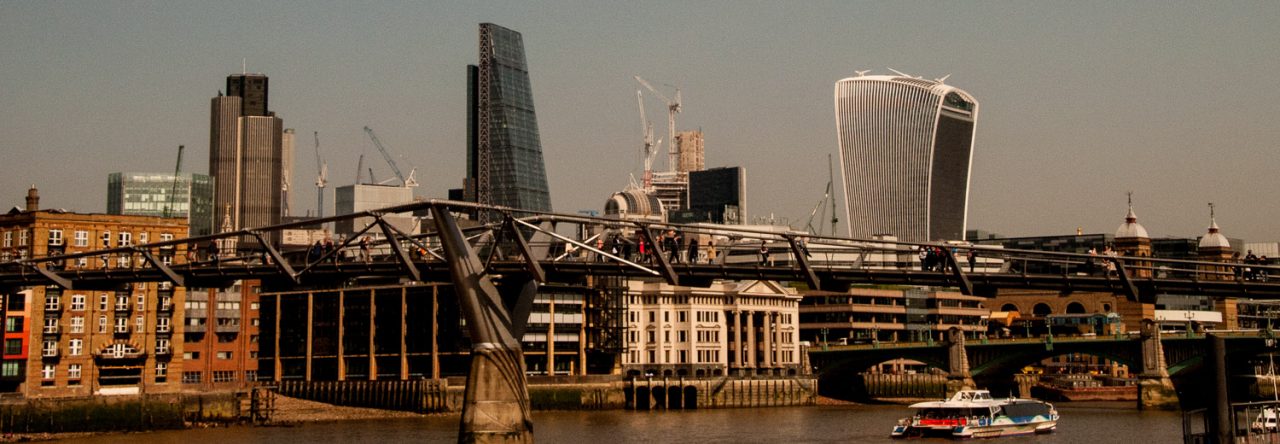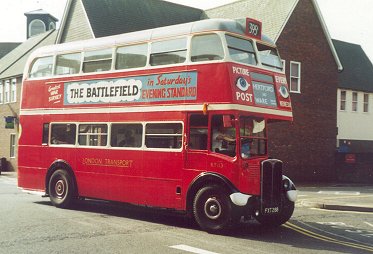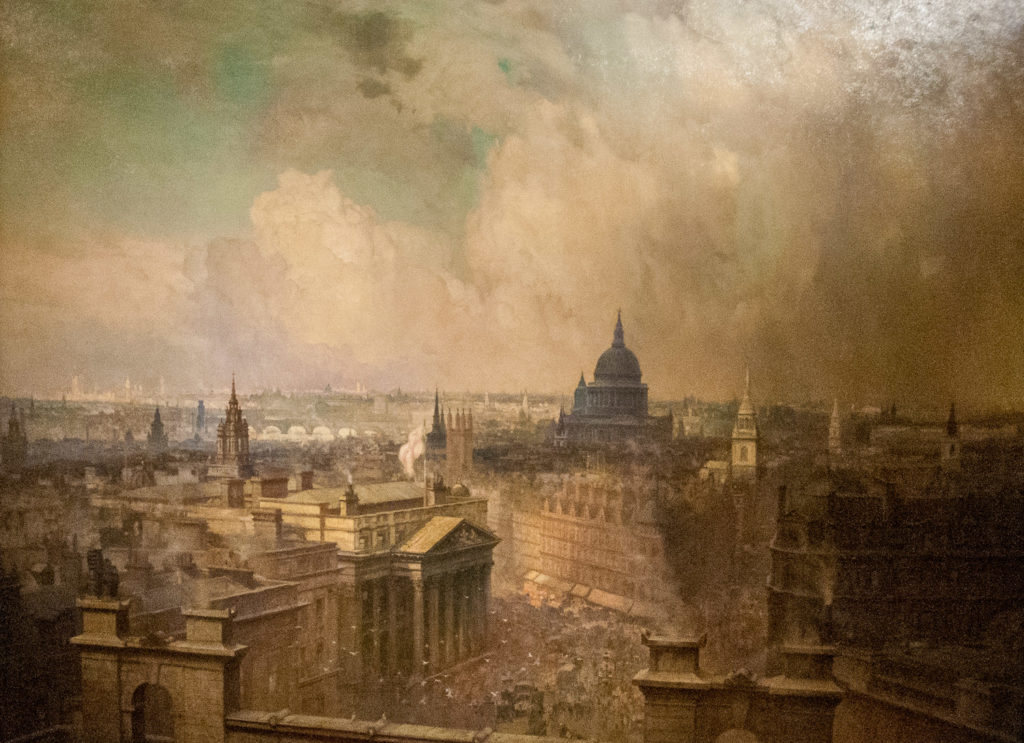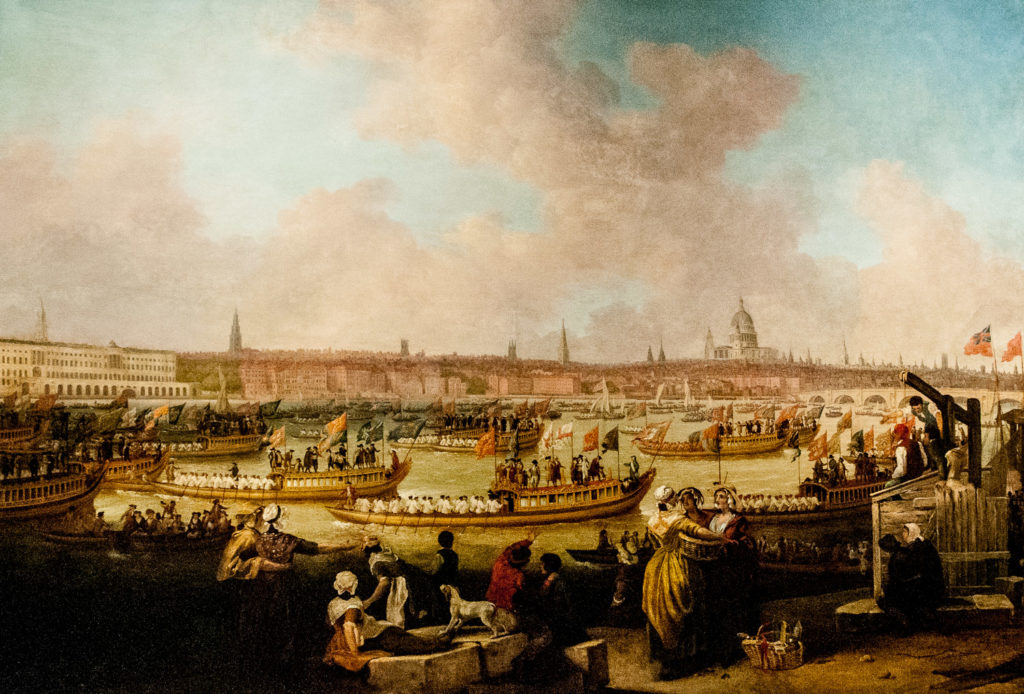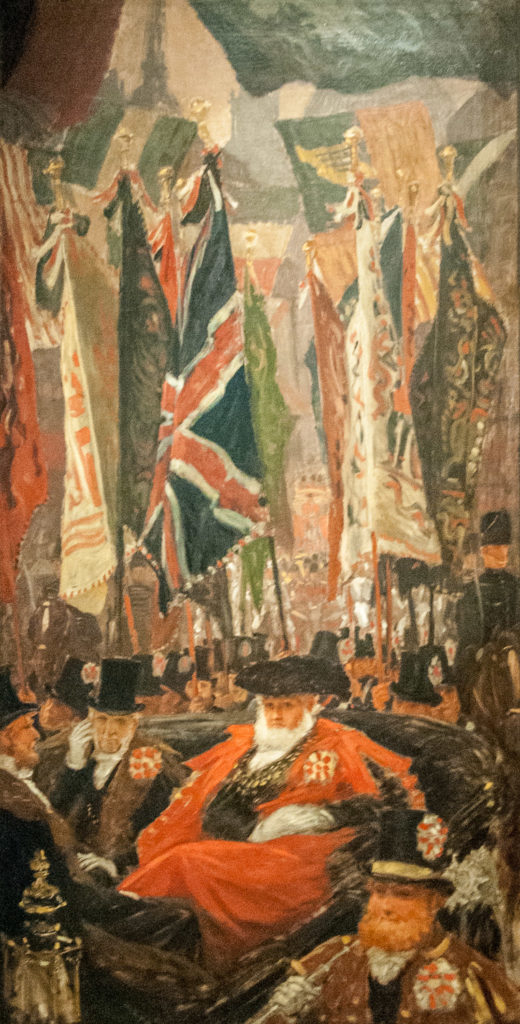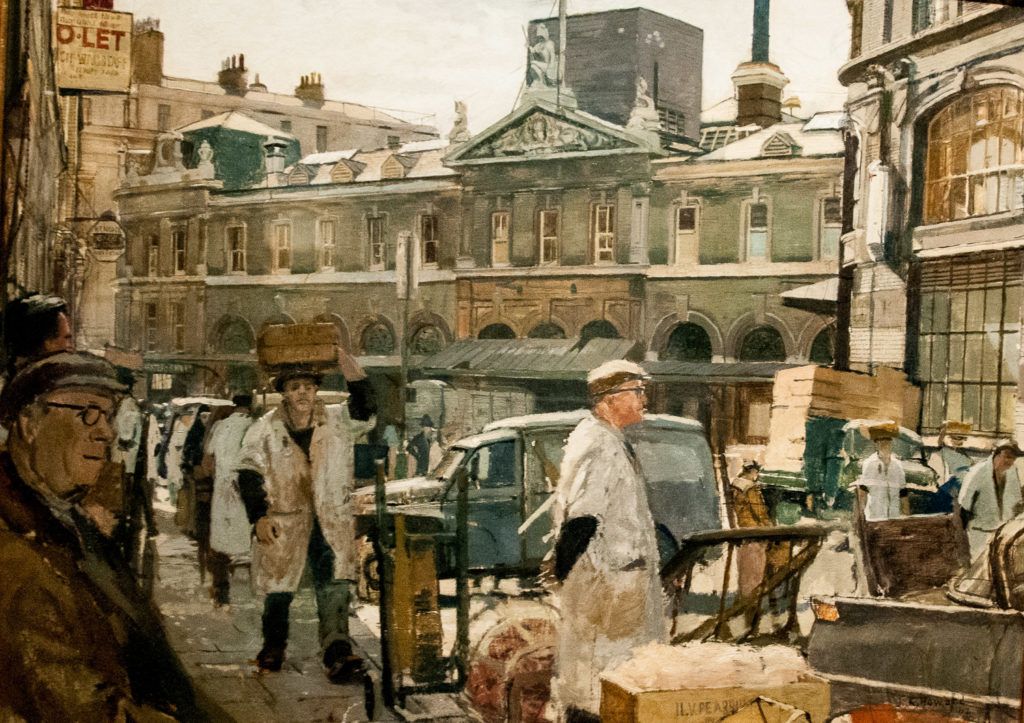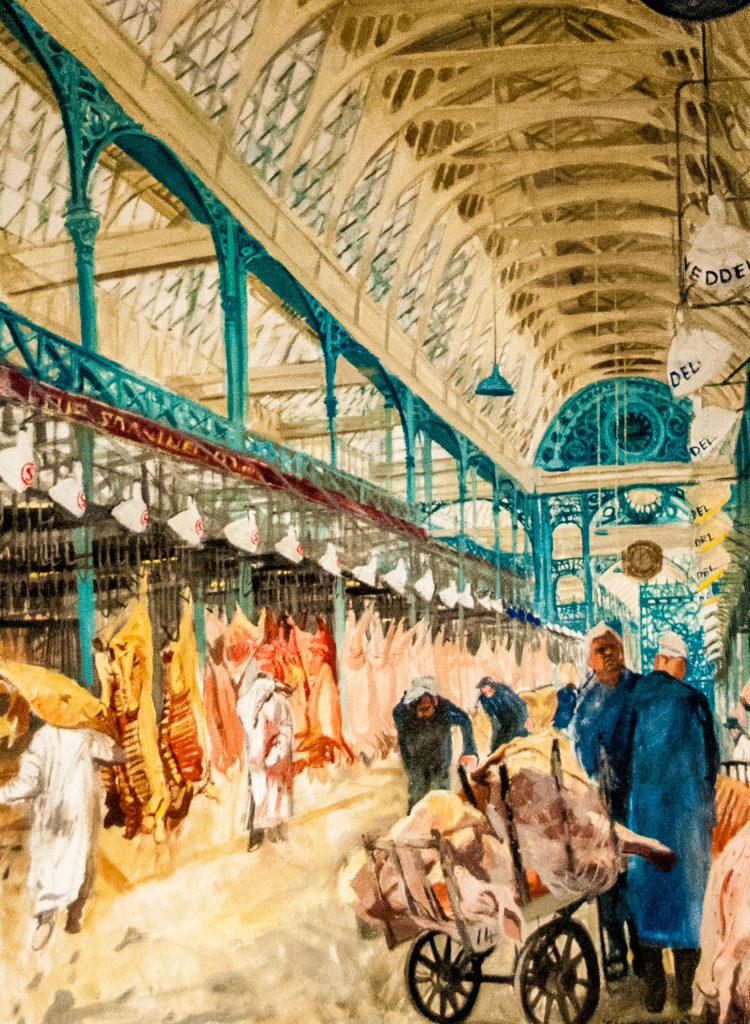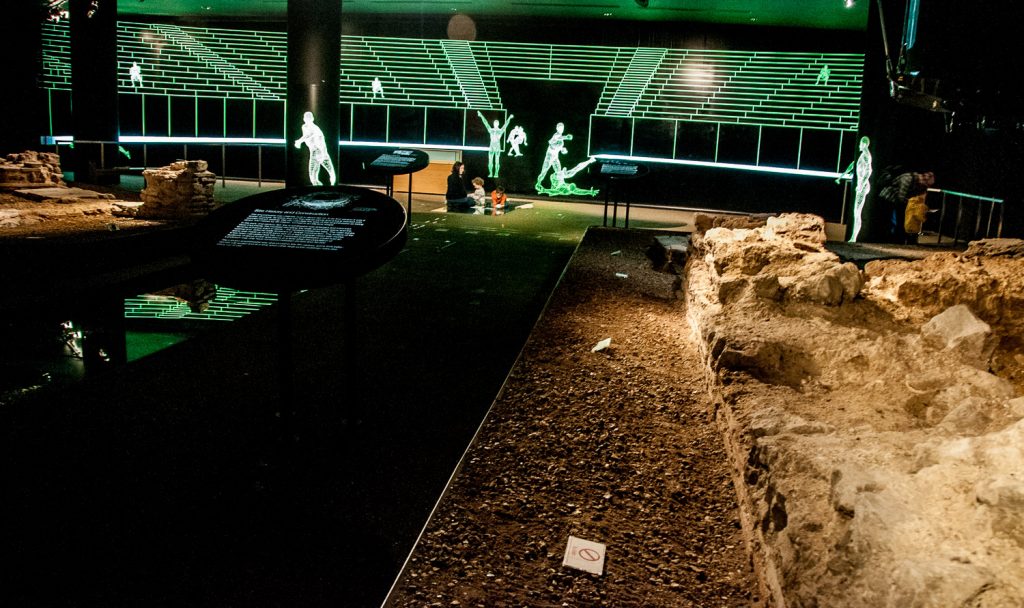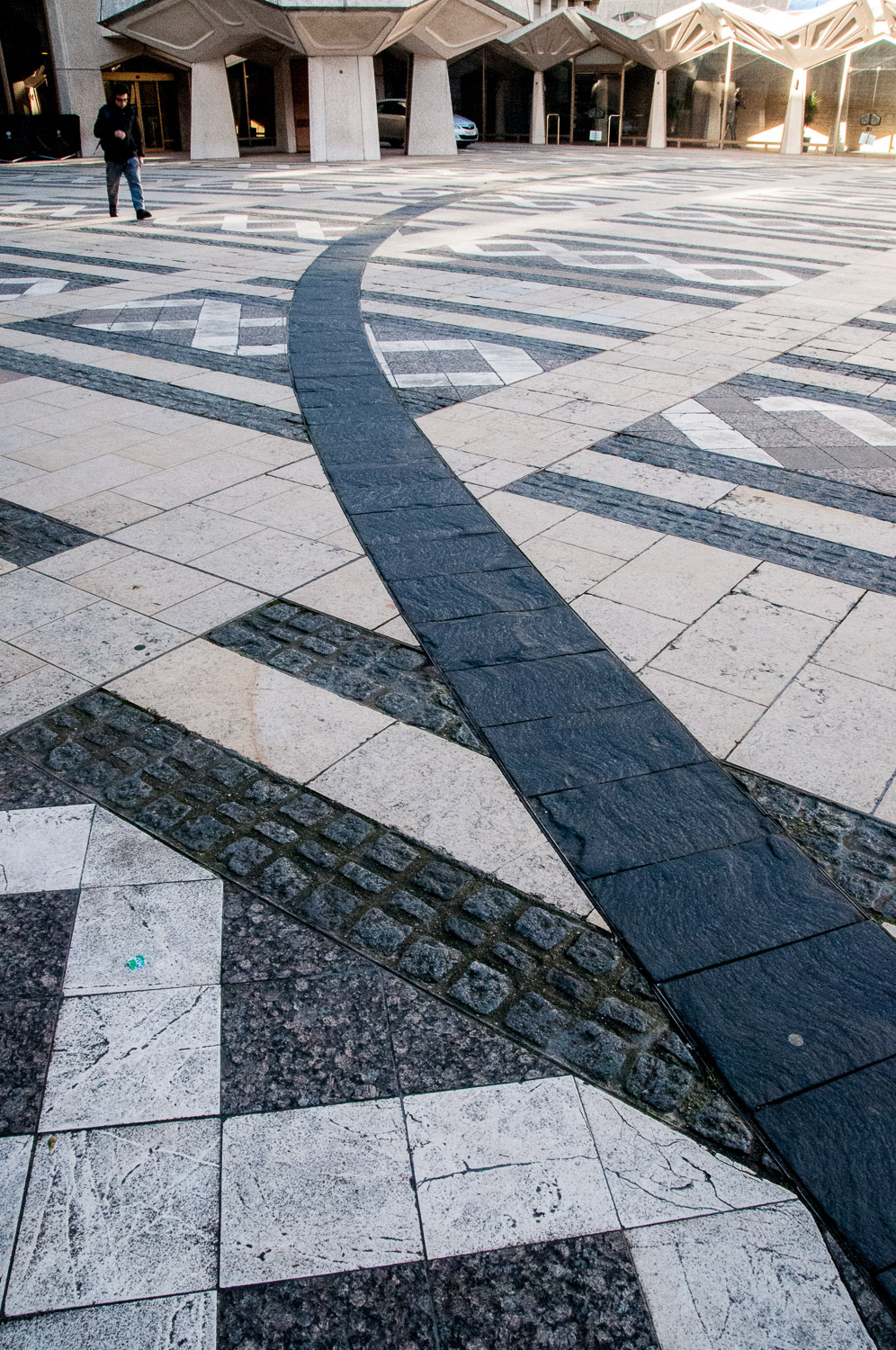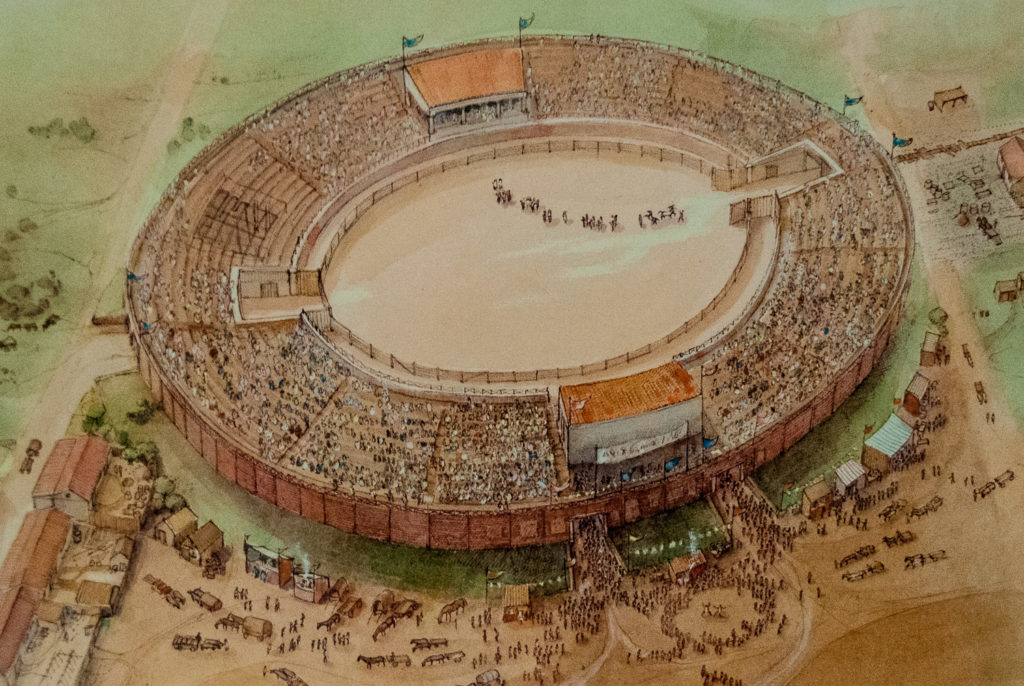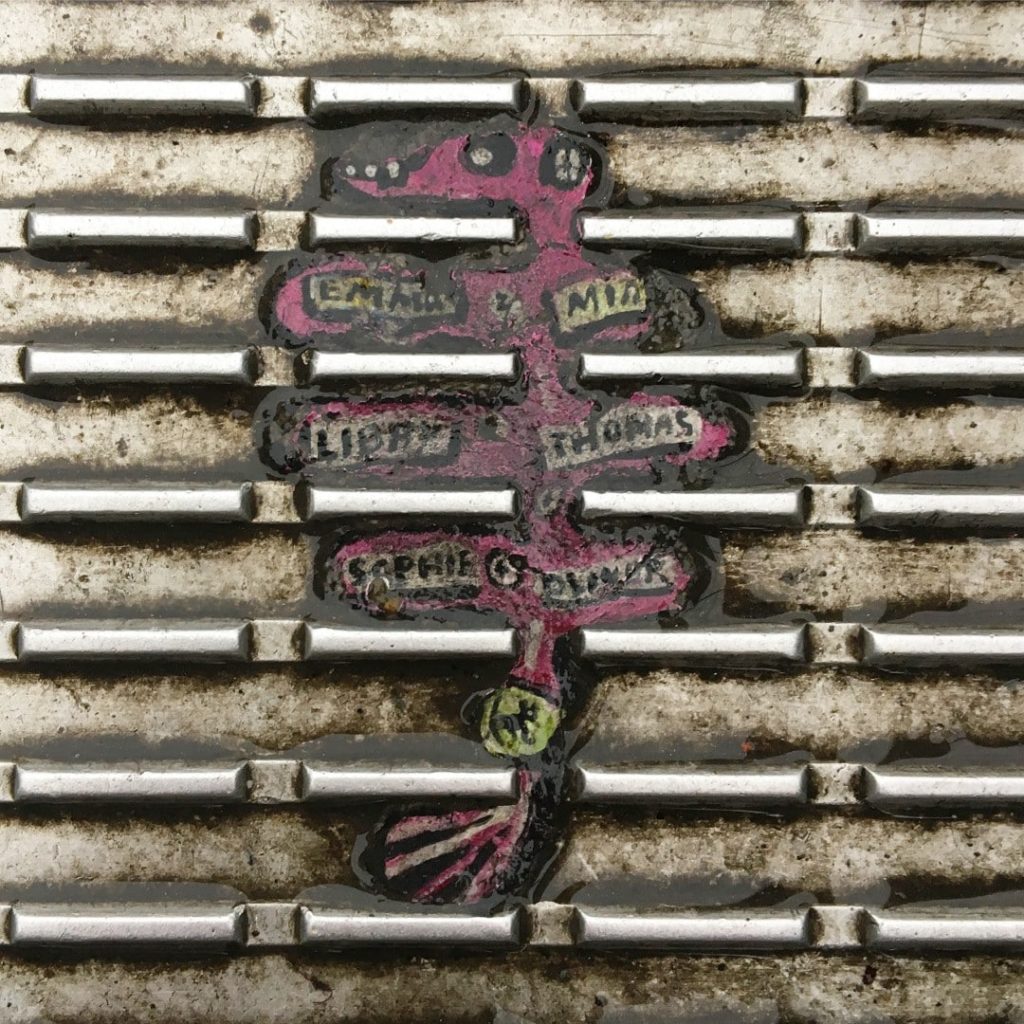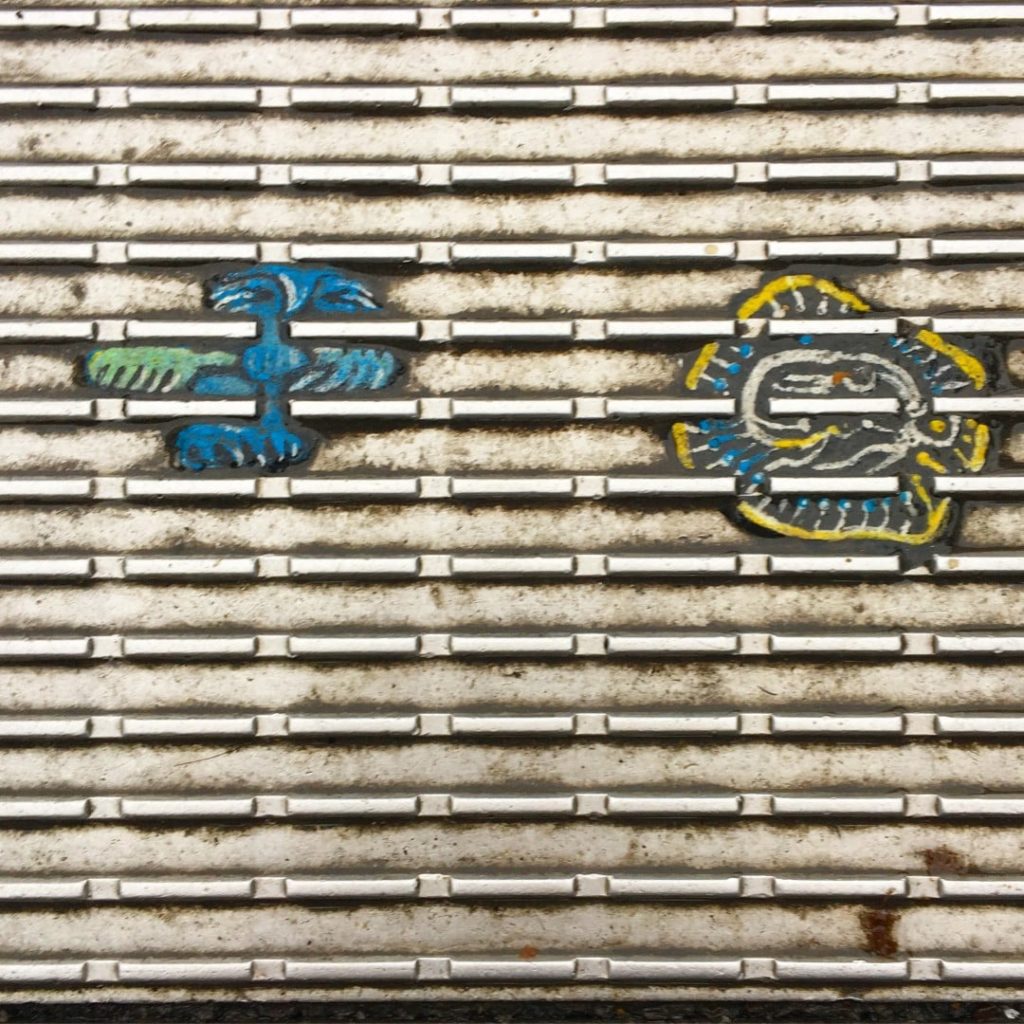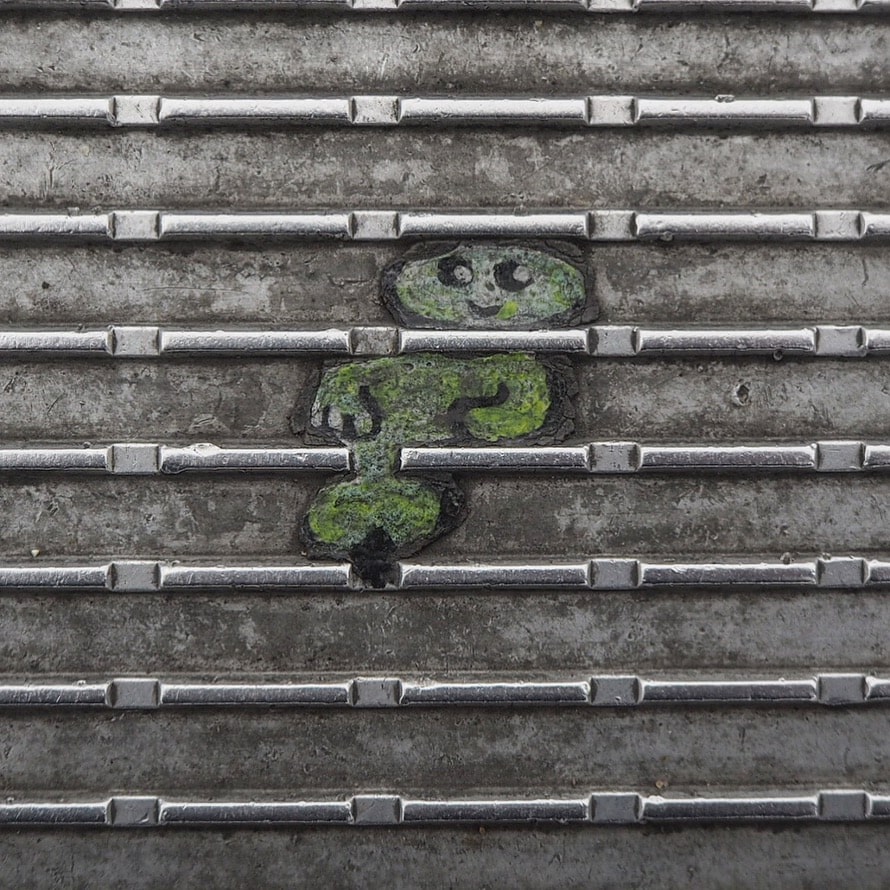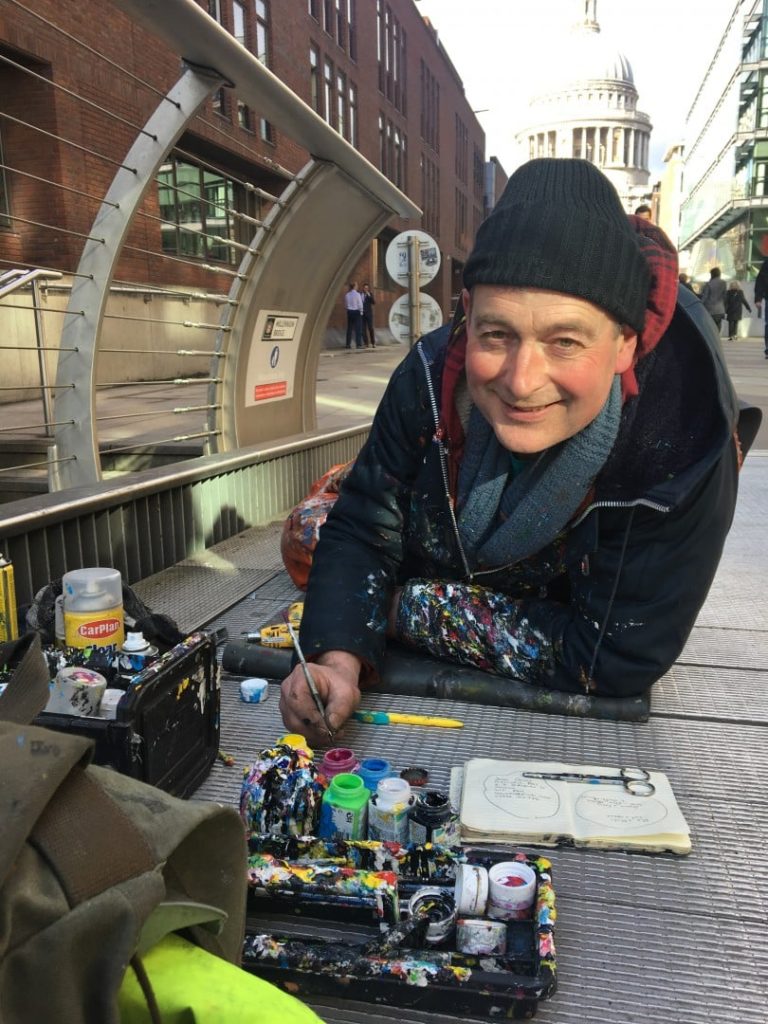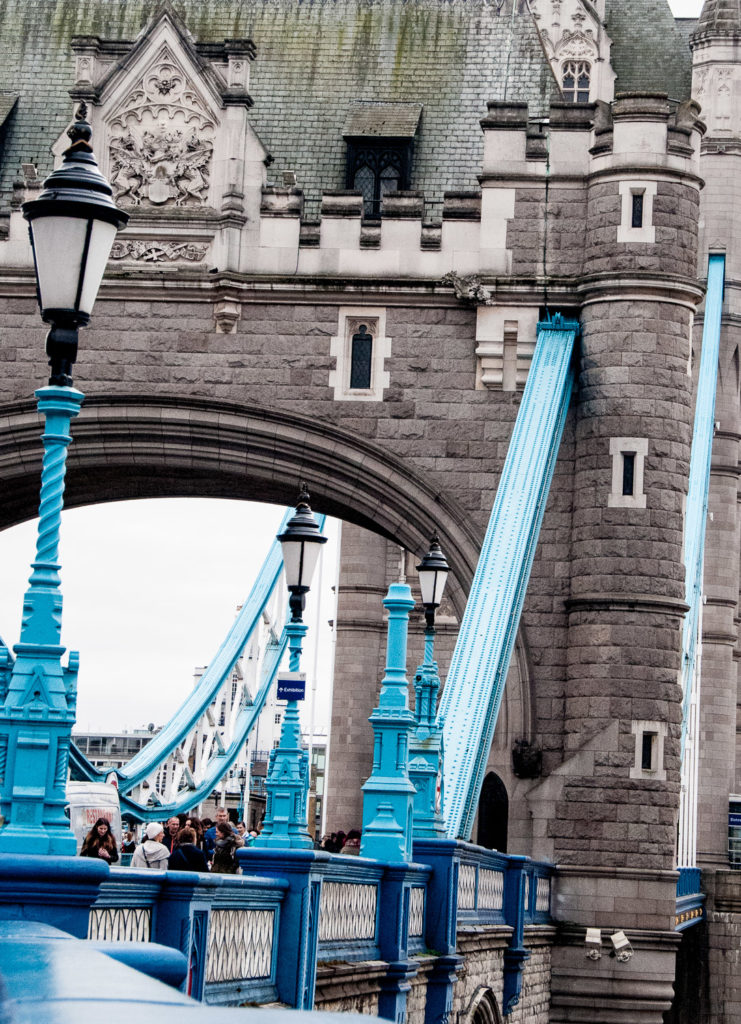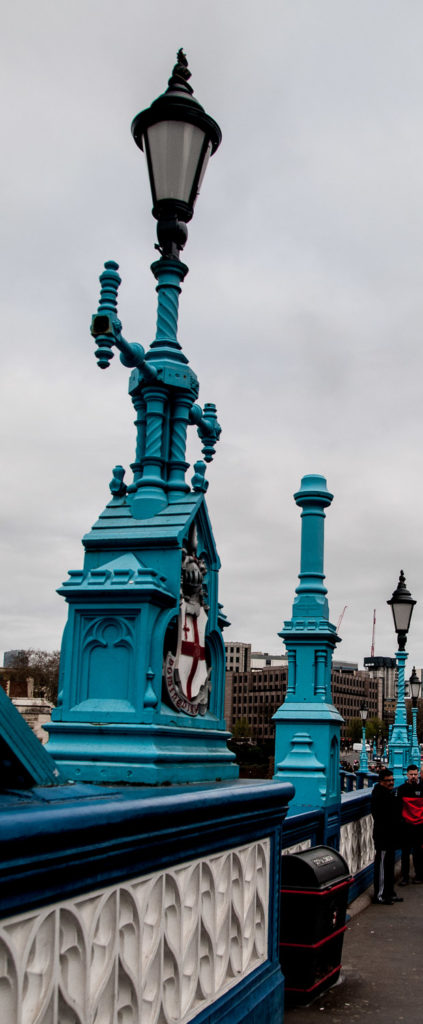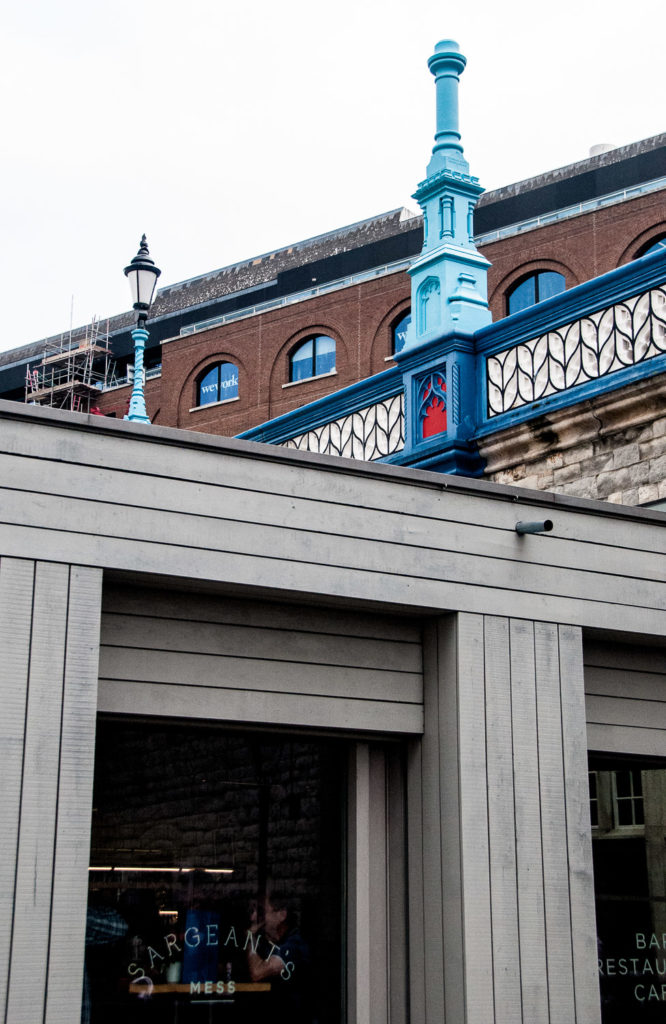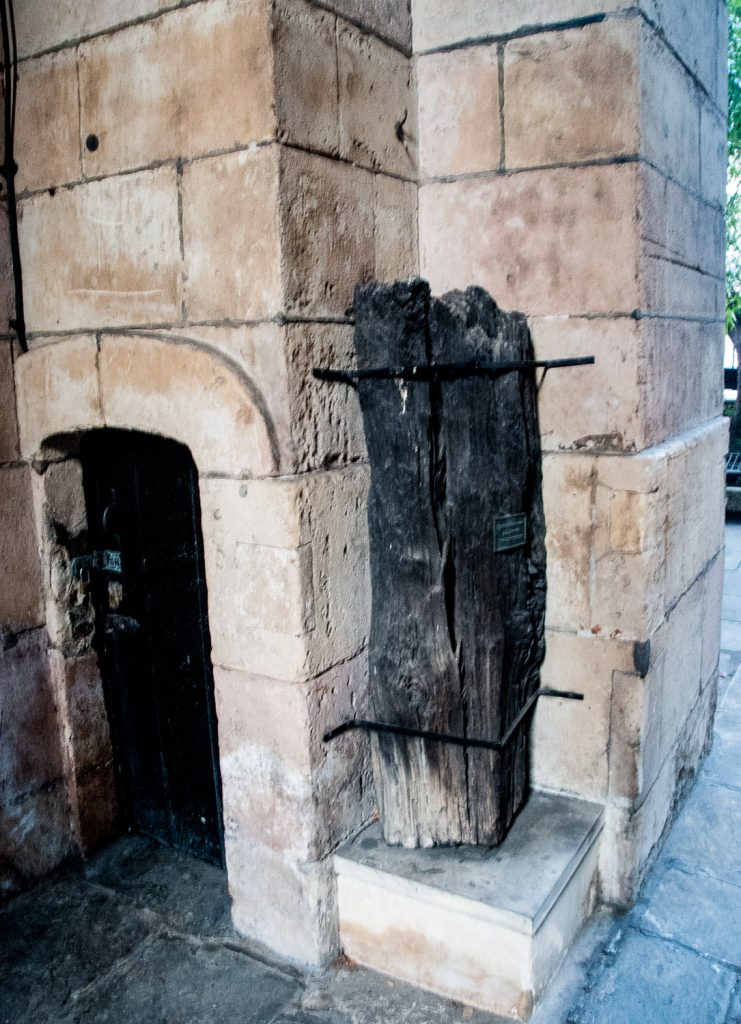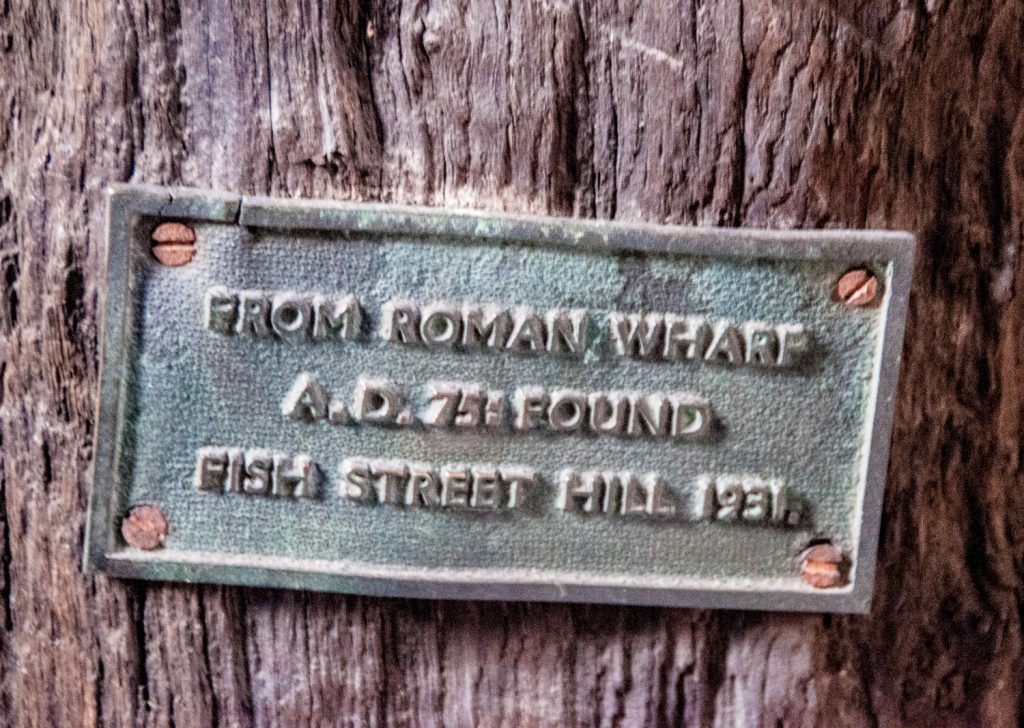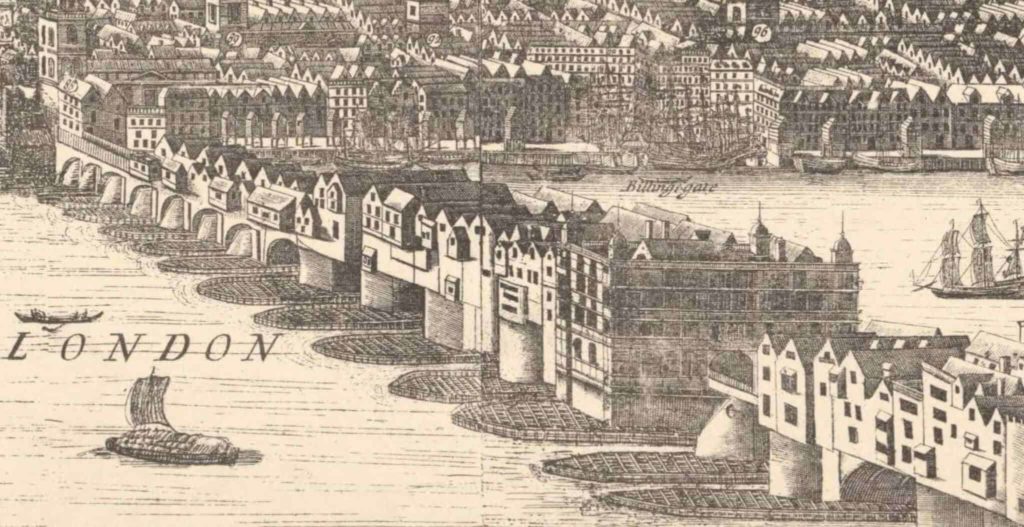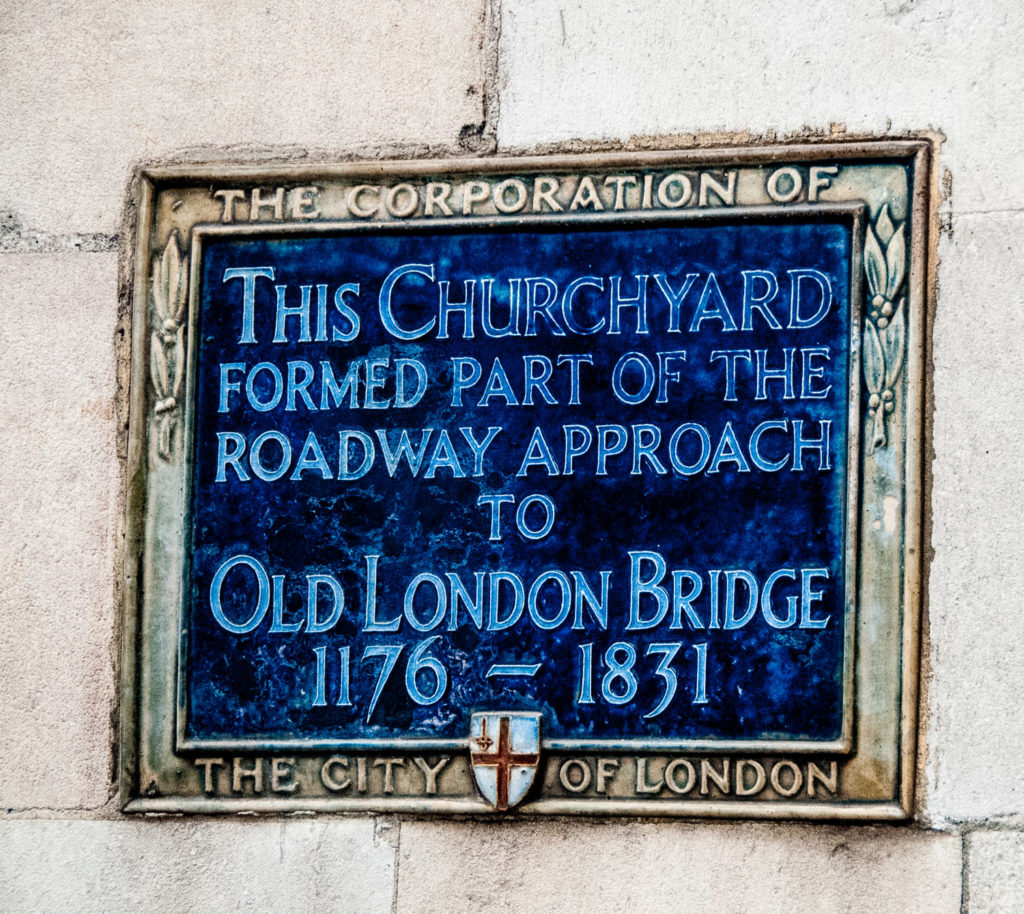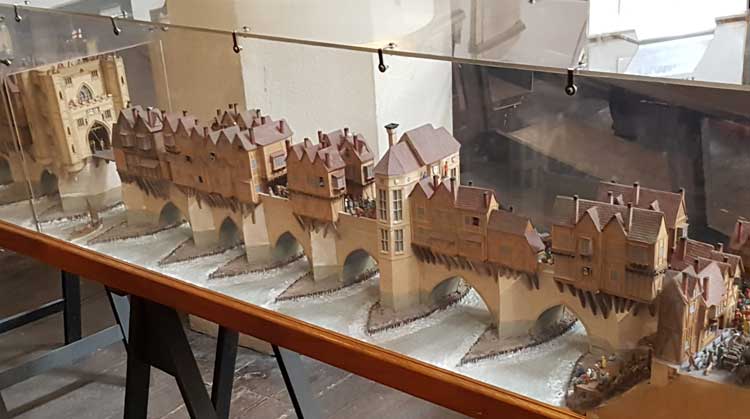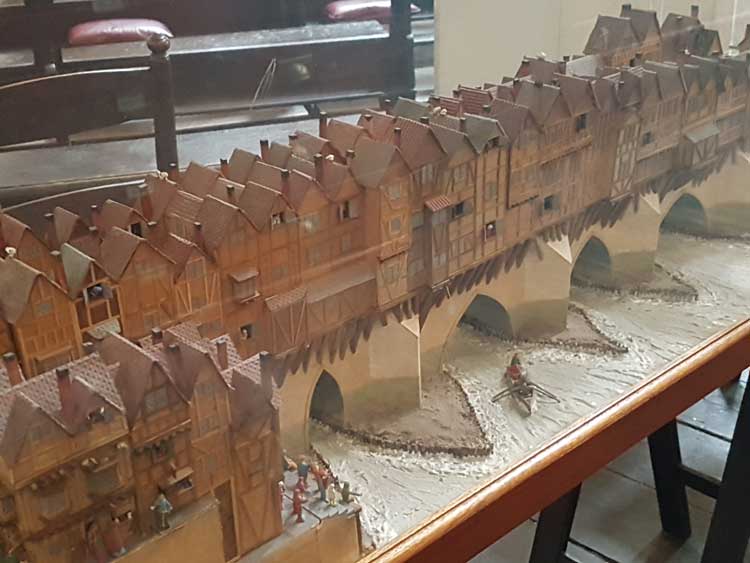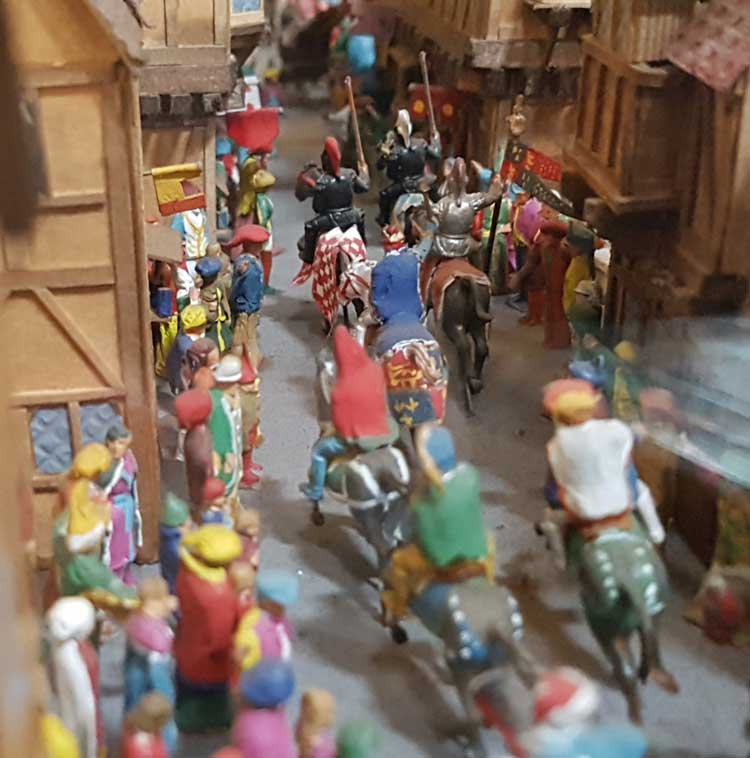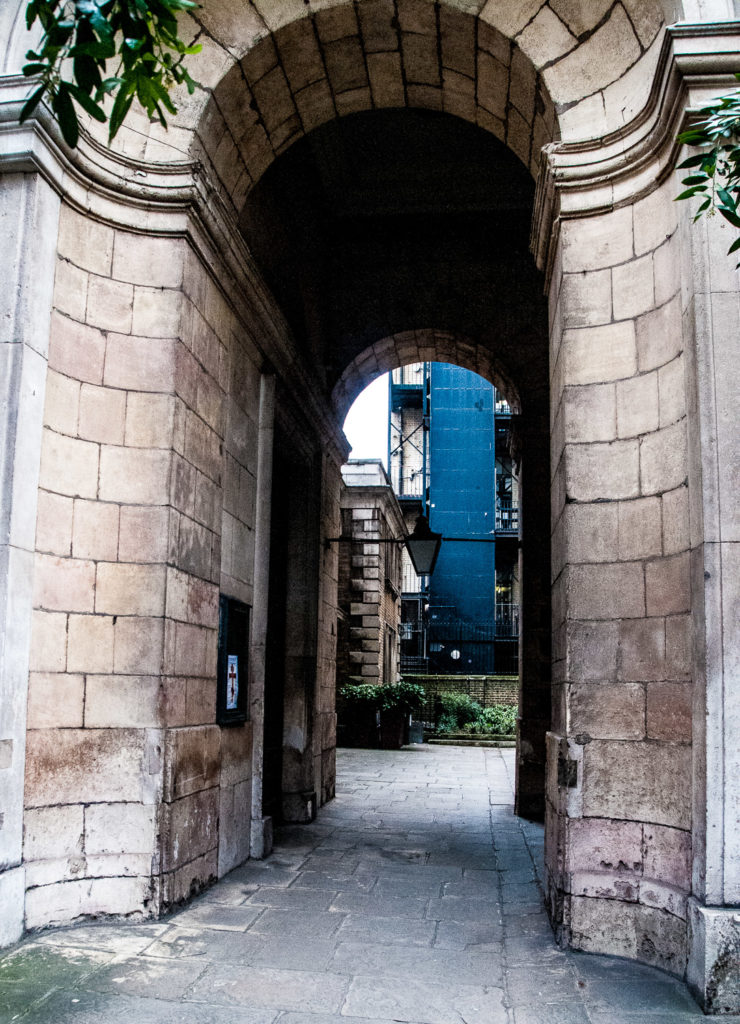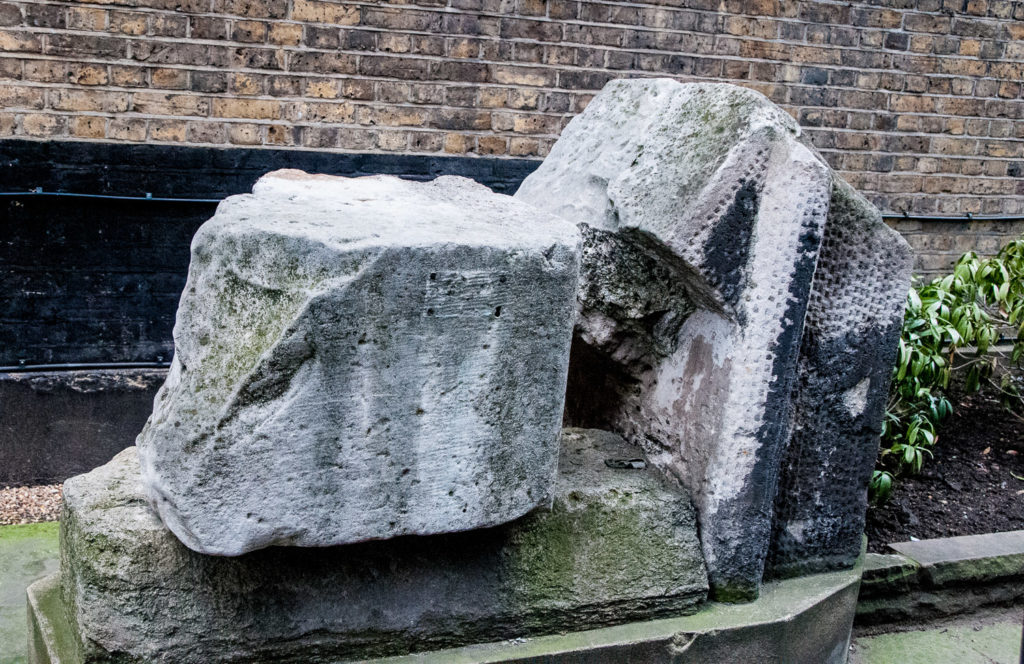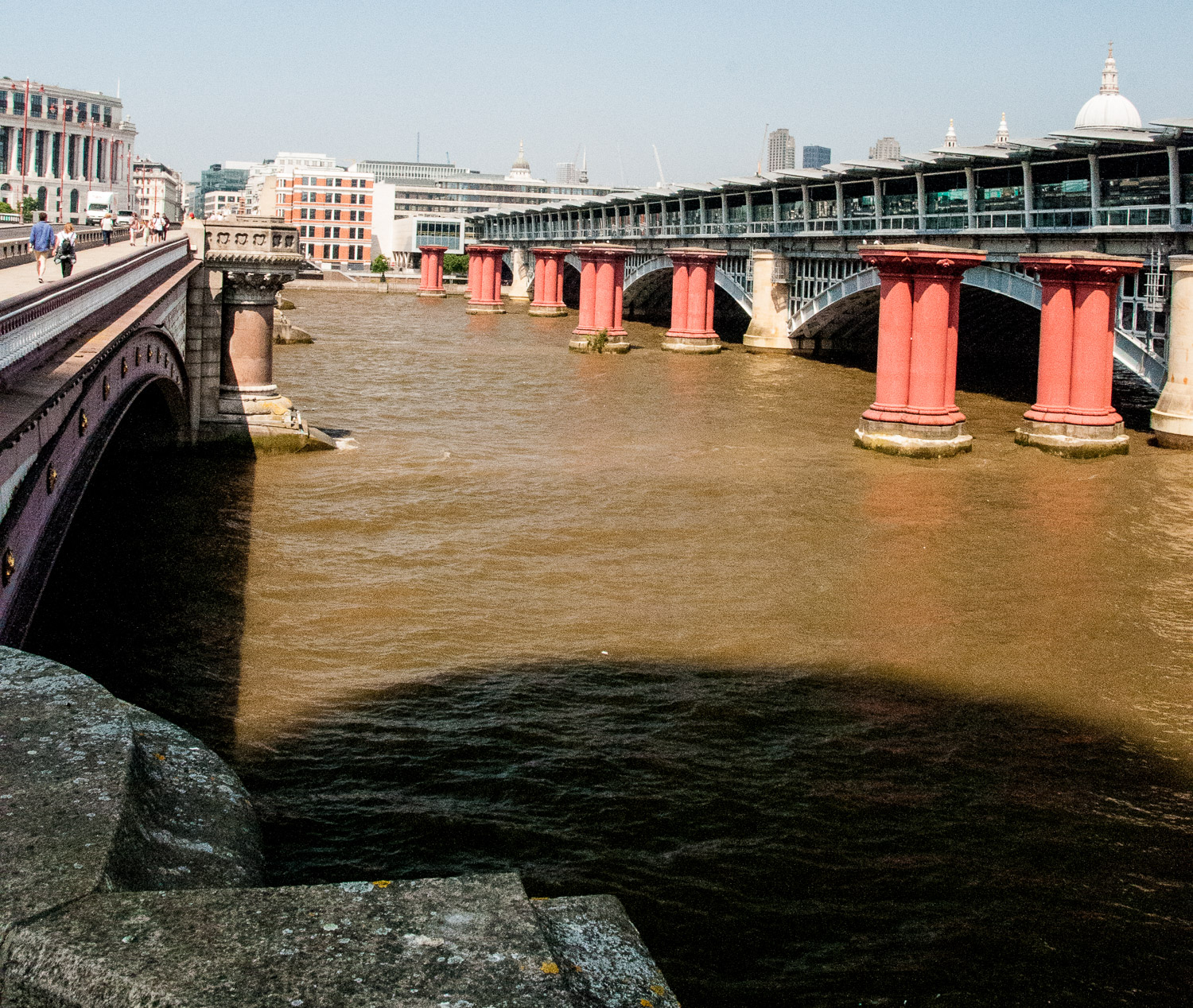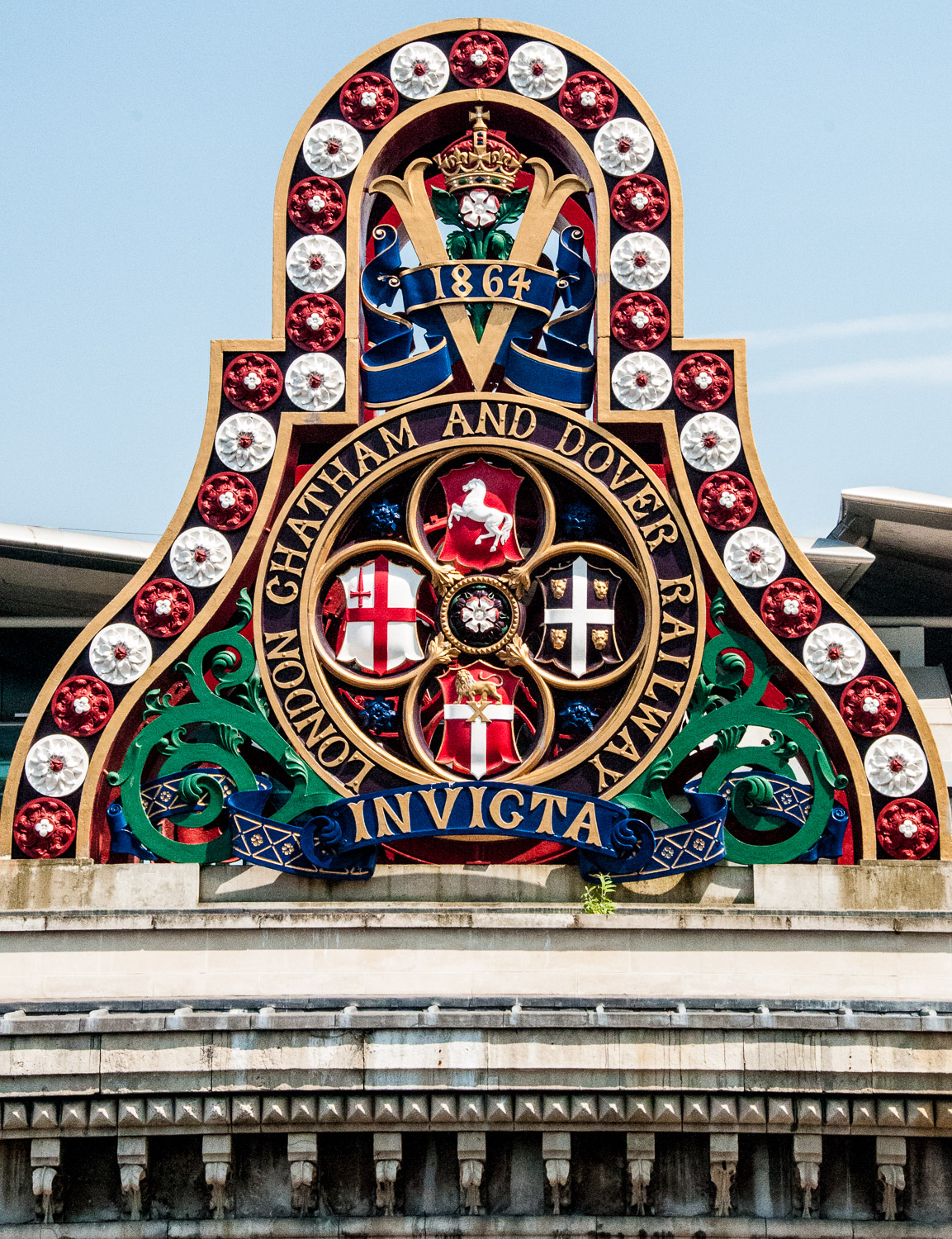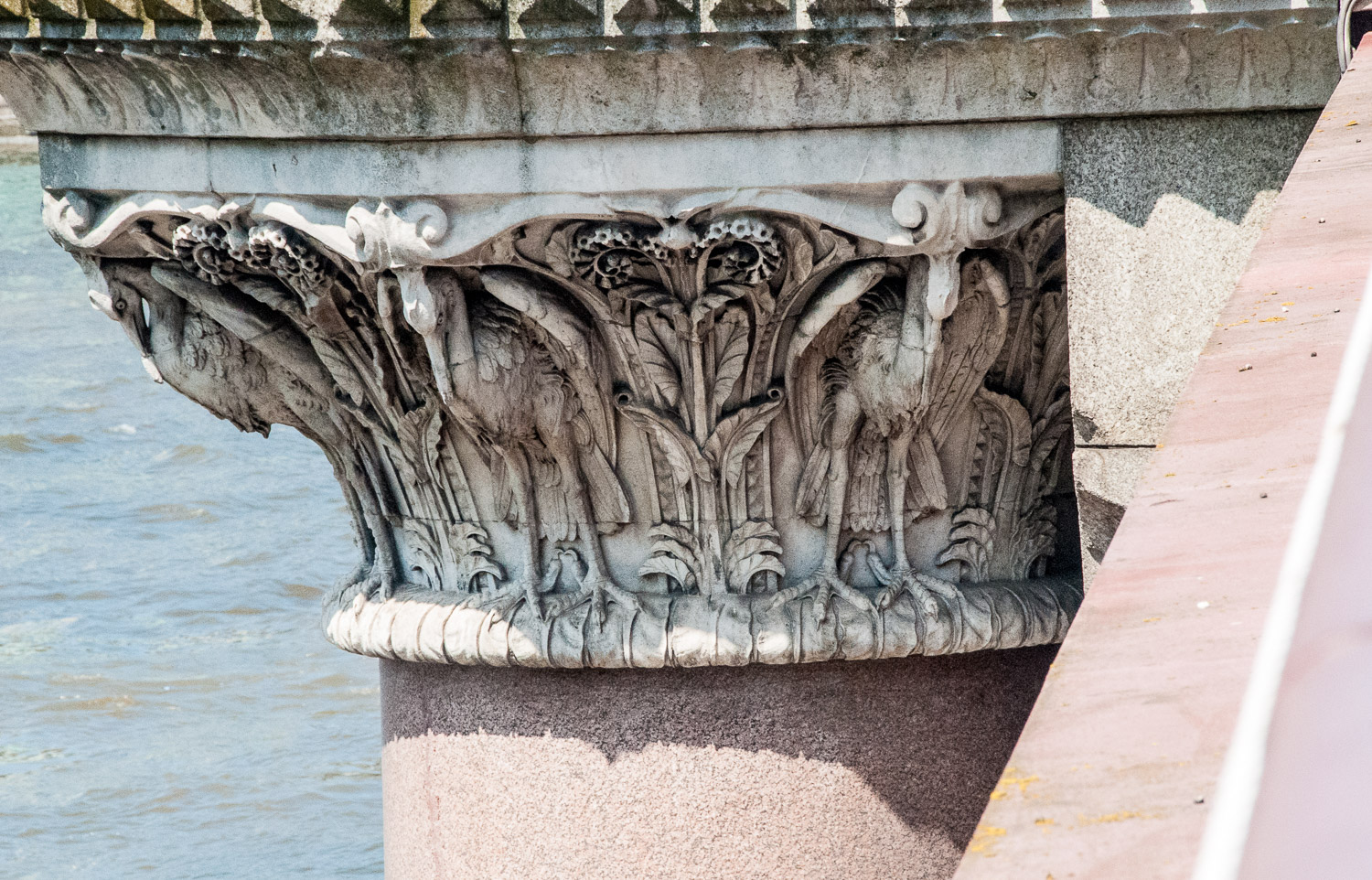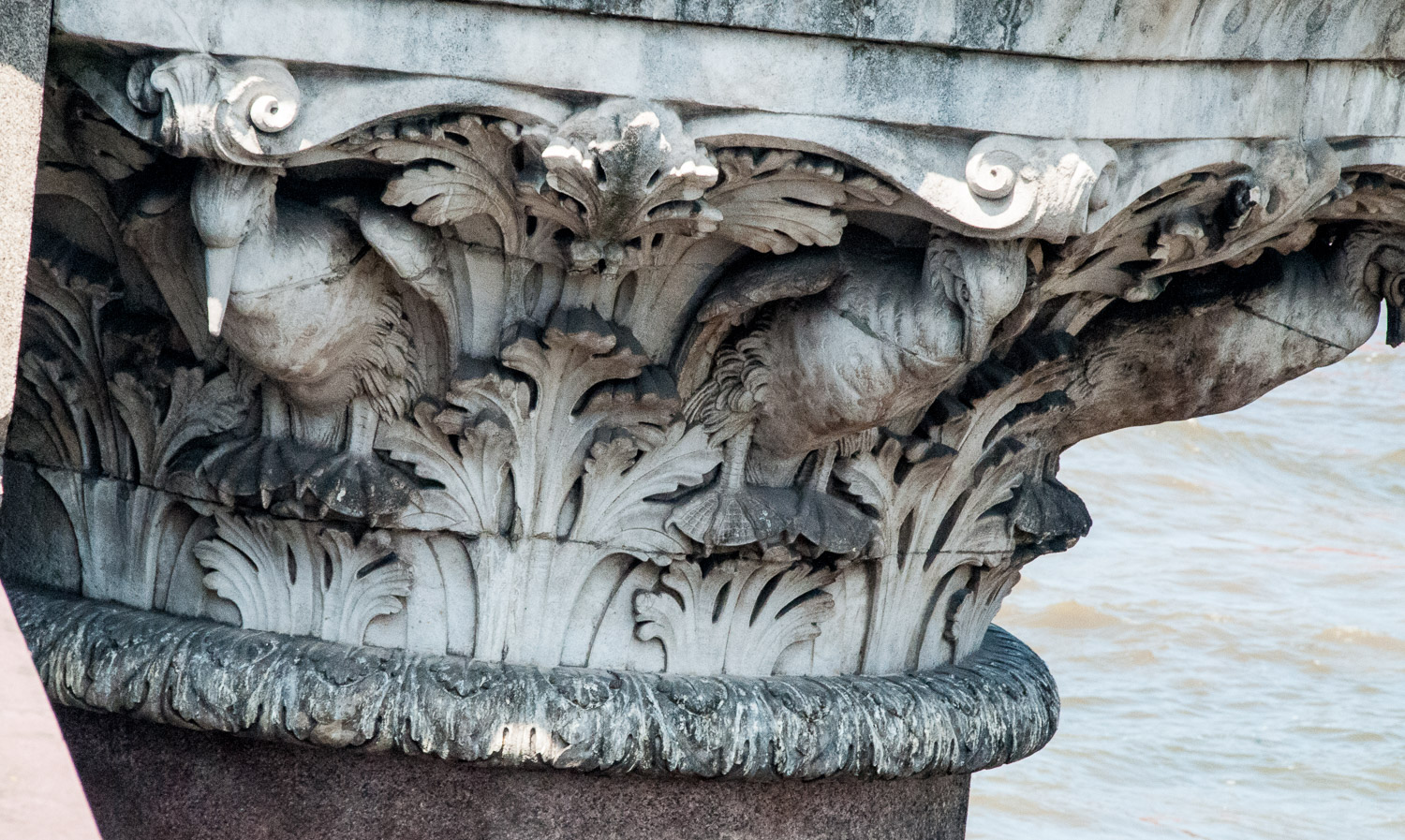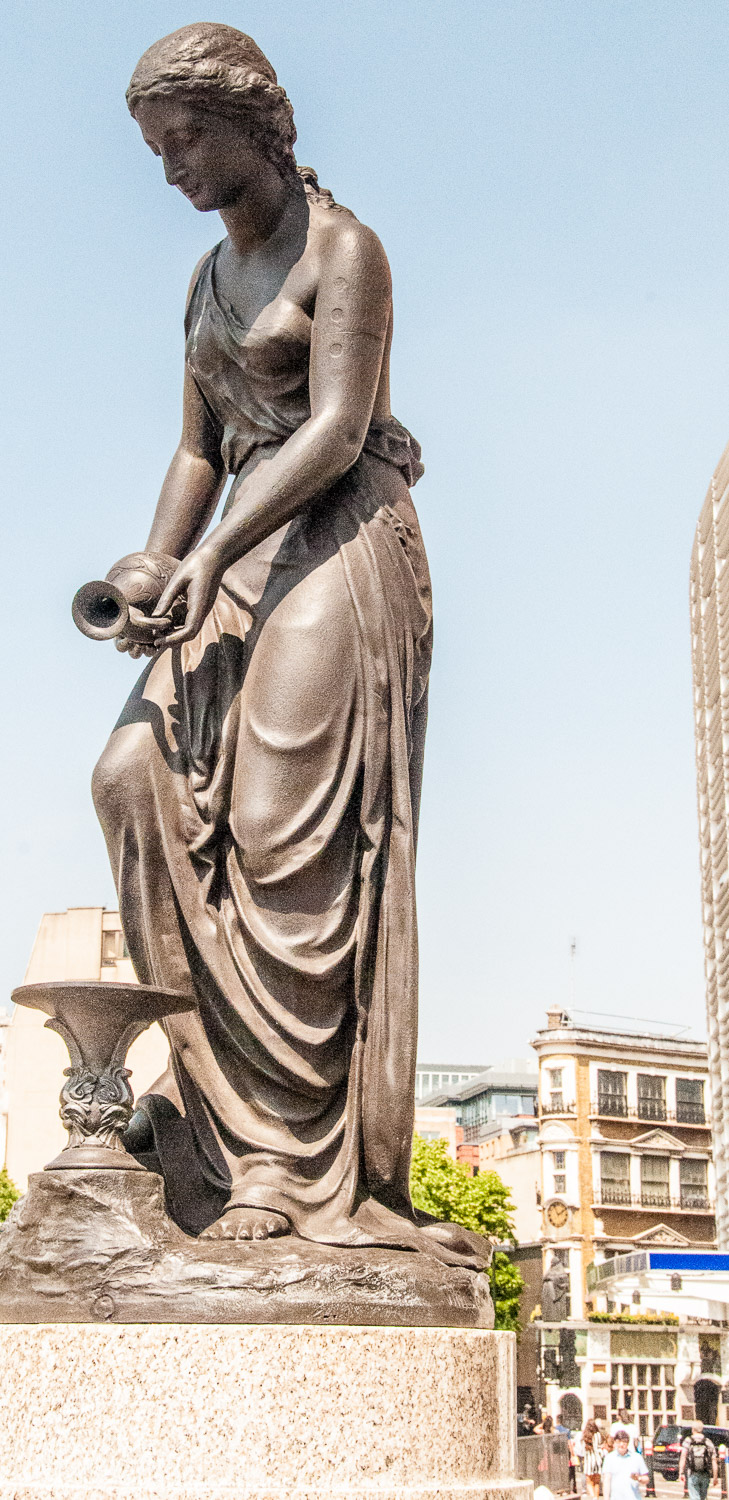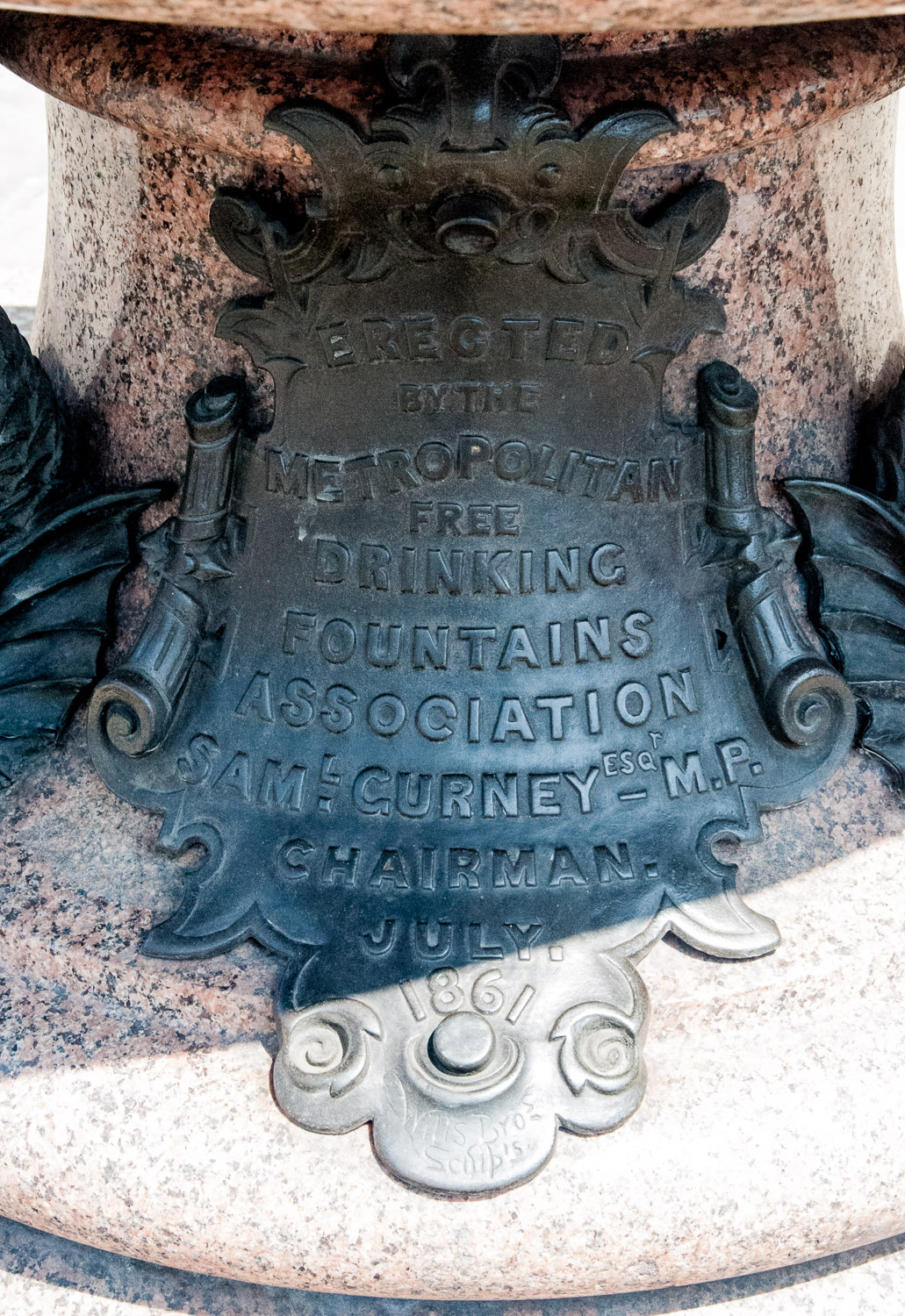In some respects, parts of the City of today look remarkably like they did decades ago whilst others are changed almost beyond recognition.
I shall start with the entrance to the Guildhall as painted in 1905 and attributed to William Luker Junior (1867-1947). I like the intimate family group with the little girl glancing back at the authentic flapping pigeons …
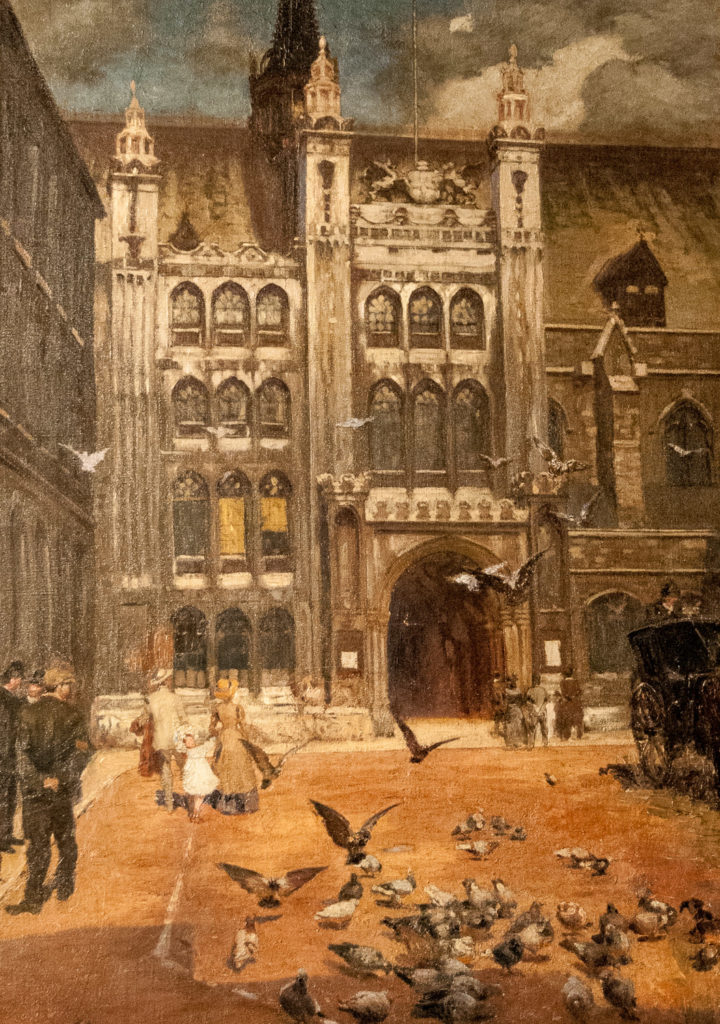
I felt I just had to write a few words about the painter.
The son of a famous artist who fell on hard times, young William (‘Willie’ to his doting mother) caused consternation when, in 1888 at the age of 21, he made a family servant pregnant. He did the honourable thing and married her, albeit secretly, which caused even more anguish to his poor mum. Records of the period show his new wife to be Margaret Stadowicka, a Polish immigrant eight years his senior. The greater responsibility seems to have prompted him to mature quickly as an artist and he became a very successful painter of animals.
This is the Guildhall entrance today …
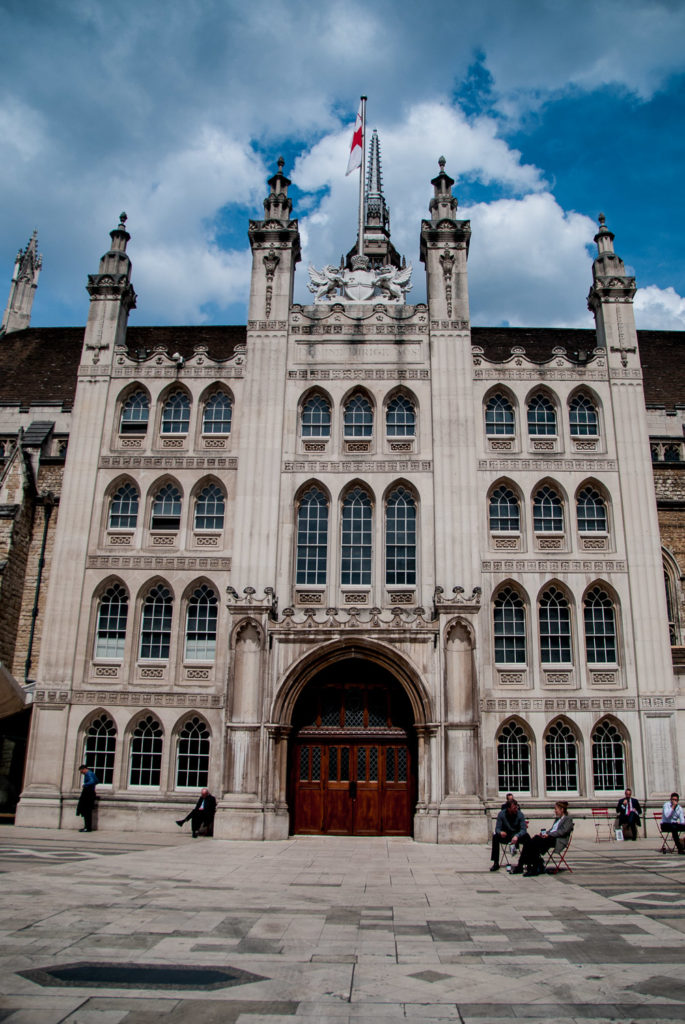
The view from Fleet Street to St Paul’s Cathedral was slightly improved by the removal in 1990 of the London Chatham & Dover Railway bridge that used to span Ludgate Hill. Here is the view at the turn of the last century …
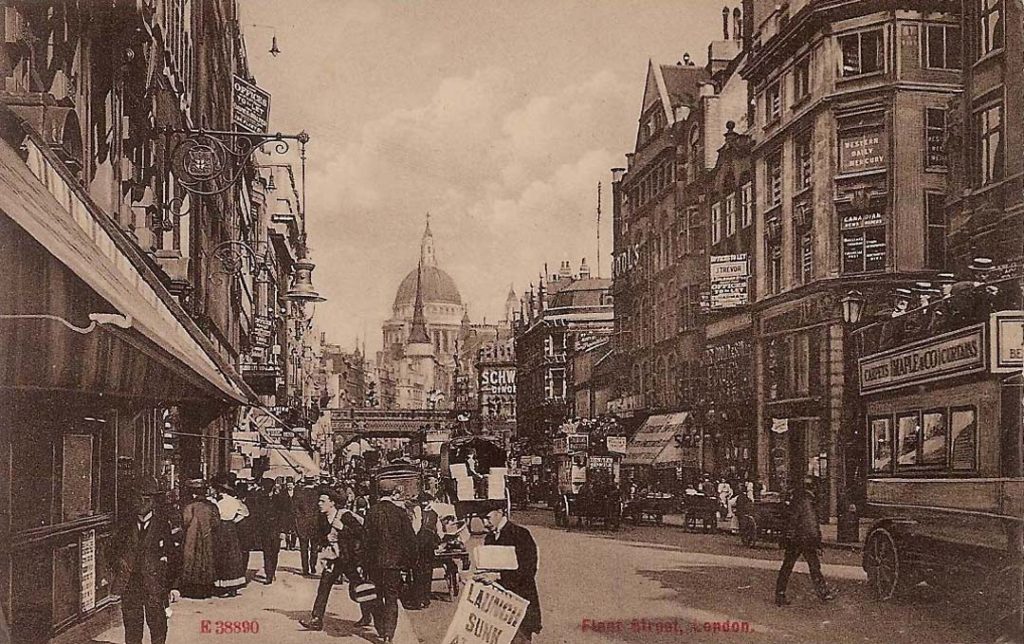
This view (from Gillian Tindall’s book A Tunnel Through Time) shows the railway bridge in more detail …
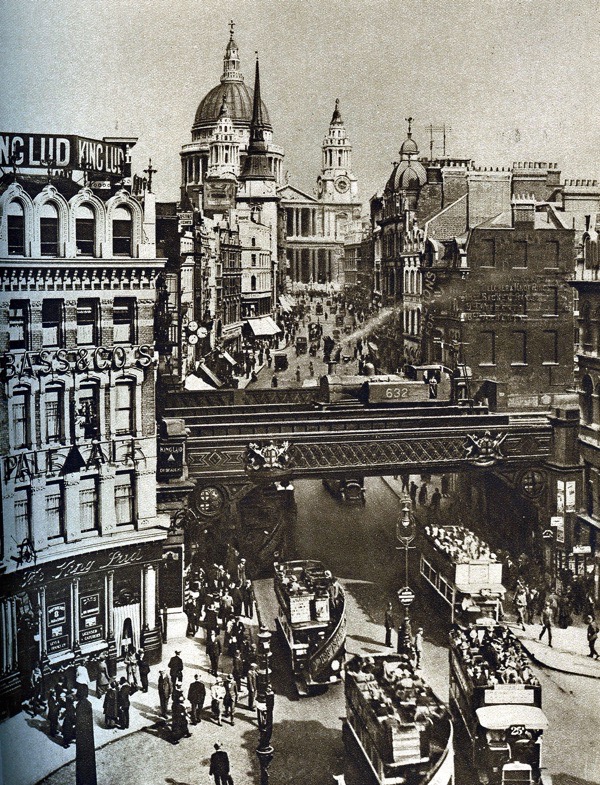
And here is a more recent image. The bridge may have gone but modern buildings do intrude …
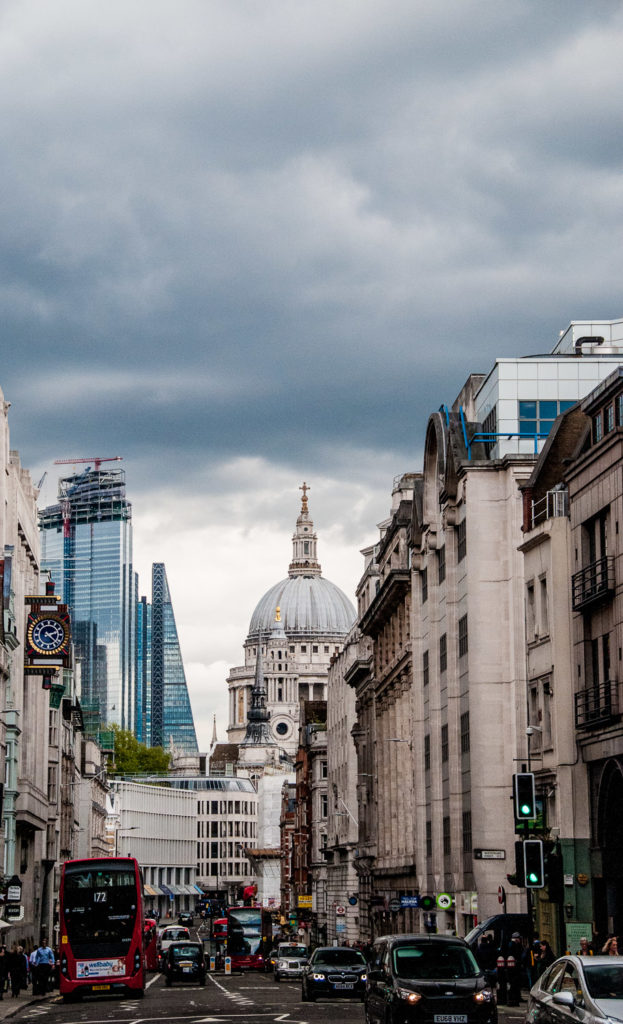
This is a photograph of the Wren church of St Alban Wood Street circa 1875 …
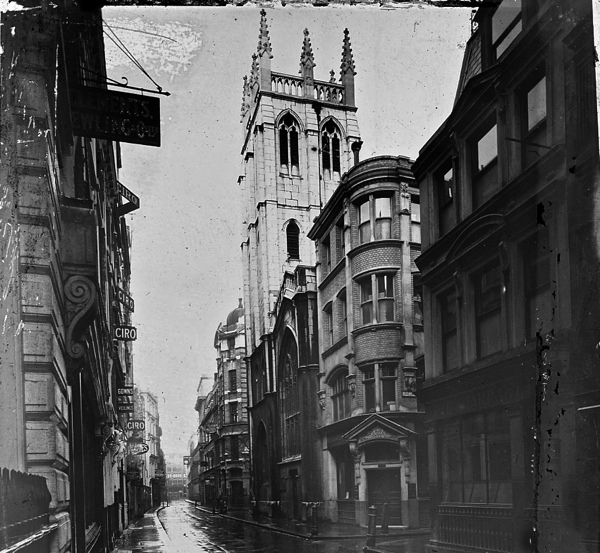
And here is the view today. Only the church tower remains as the area was devastated by Second World War bombing …
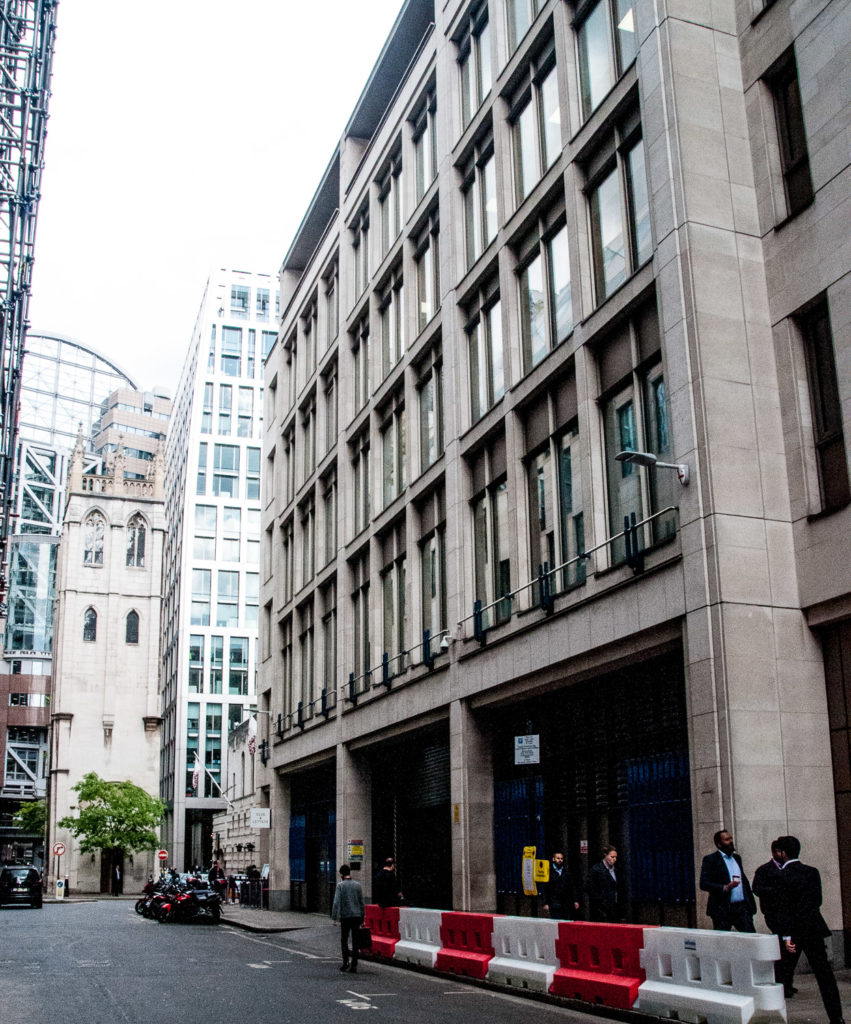
The name Cheapside comes from the old English term for a market (ceapan – ‘to buy’) and the a street with this name was here long before the Great Fire of 1666. Here is a picture taken around 1890 looking east when there were about 11,000 hansom cabs and 500 horse-drawn buses in London. By 1910 they had all virtually disappeared to be replaced by taxis and motor buses …
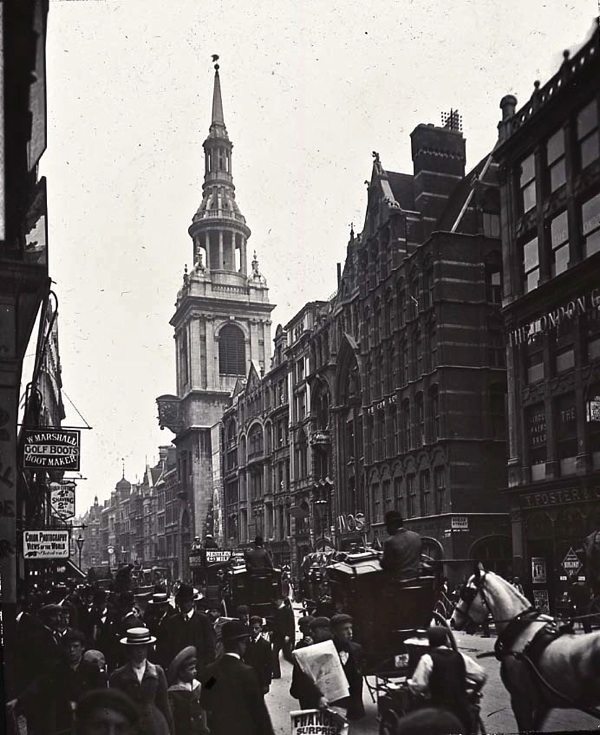
And here is a view from about the same point taken in May 2019 …
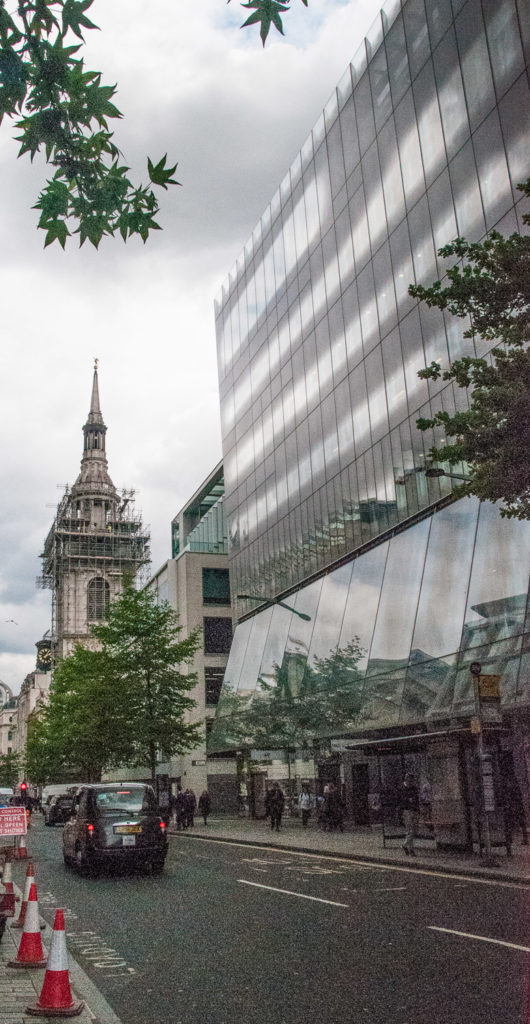
Apart from the tower of St Mary-le-Bow, the south side of Cheapside has changed dramatically with the construction of the office and retail space One New Change. On the north side at the junction with Wood Street, however, stands a little treasure …
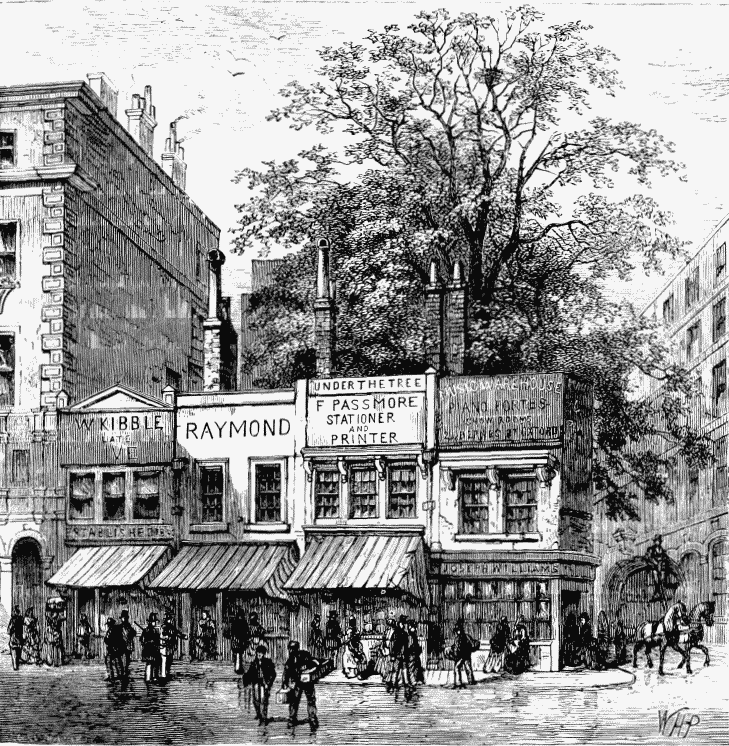
The rebuilding of the City after the Great Fire took over forty years, but the little shop on Cheapside, along with its three neighbours to the west, were some of the earliest new structures to be built as the City recovered. The site is small and each of the shops in the row consists of a single storey above and a box front below.
The plaque in the churchyard attached to the Cheapside shop’s northern wall confirms the age of the building …
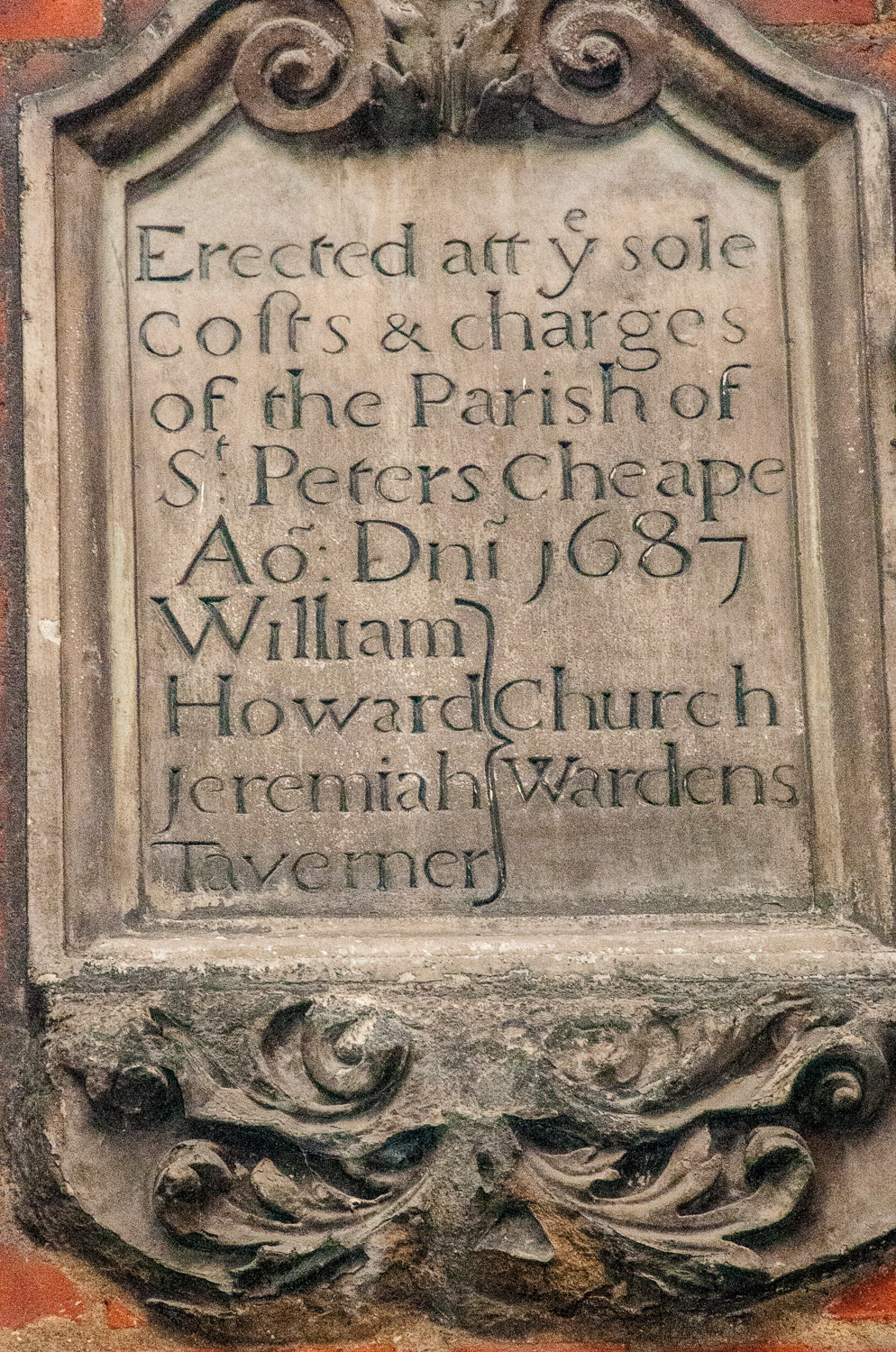
This is how the corner looks today …
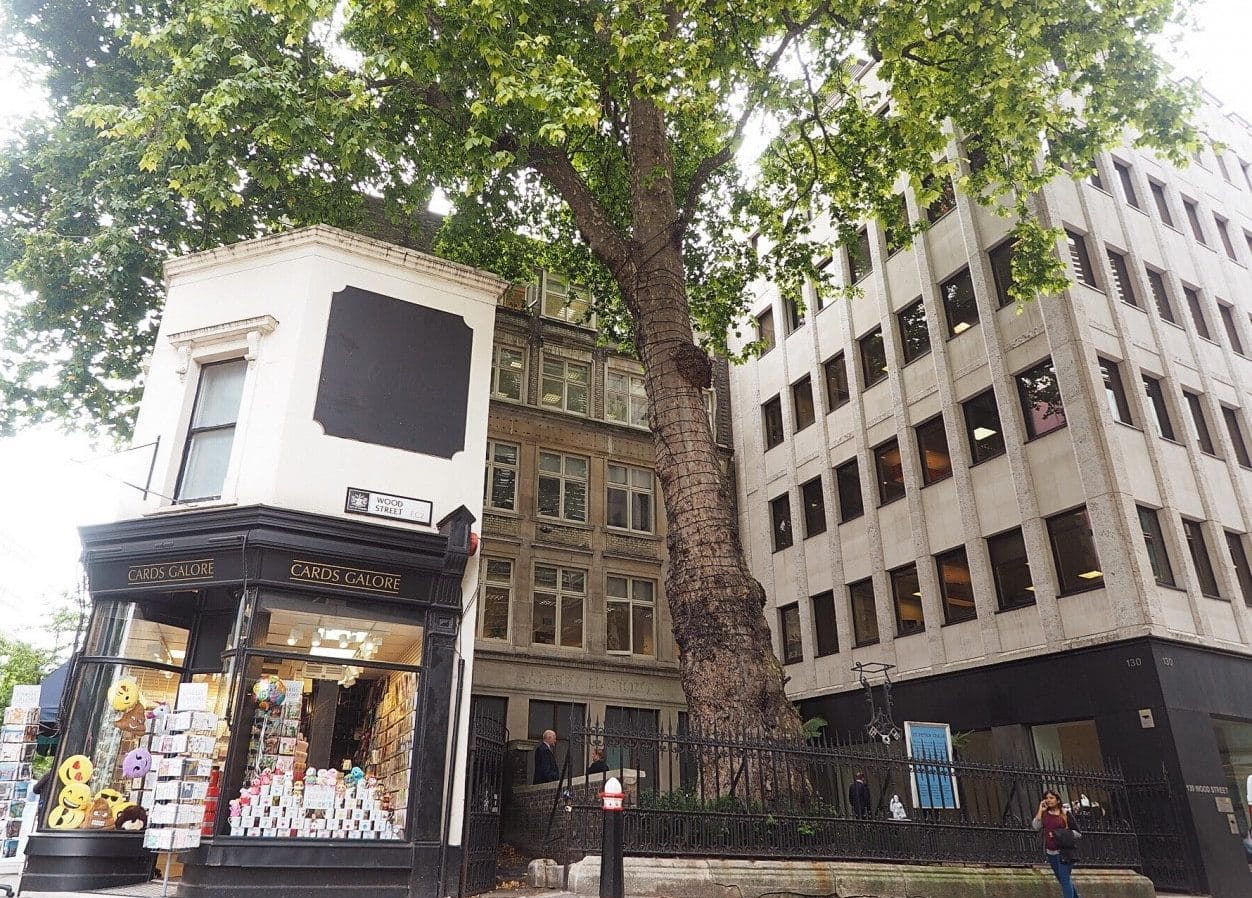
You can read lots more about the little shop and its fascinating immediate surroundings in my earlier blog: A Shop, a Tree and a Poem. And even more here: Hidden Gems.
Some of Fleet Street has hardly changed at all. Here is a view of St Dunstan-in -the-West around 1910 …
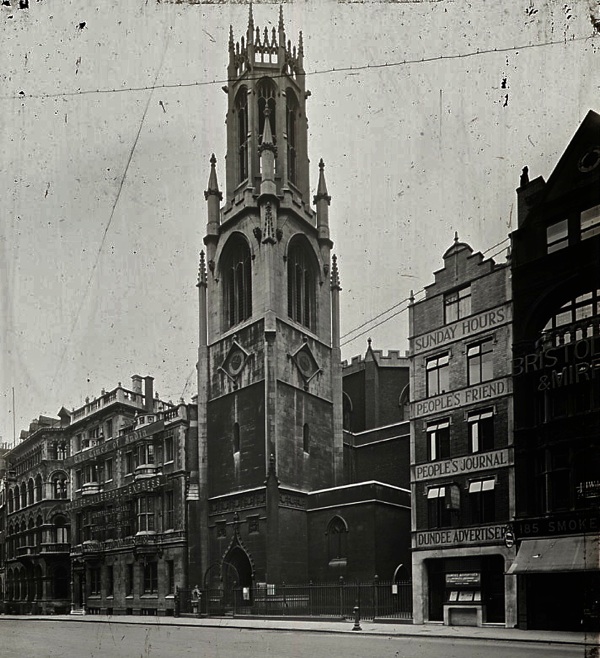
And here is a picture taken in May this year. Some of the Journals changed their names – the Dundee Advertiser becoming the Dundee Courier and the Sunday Hours becoming the Sunday Post. The Post has now become famous as the last newspaper to leave Fleet Street. They turned off the lights for the final time on 5th August 2016.
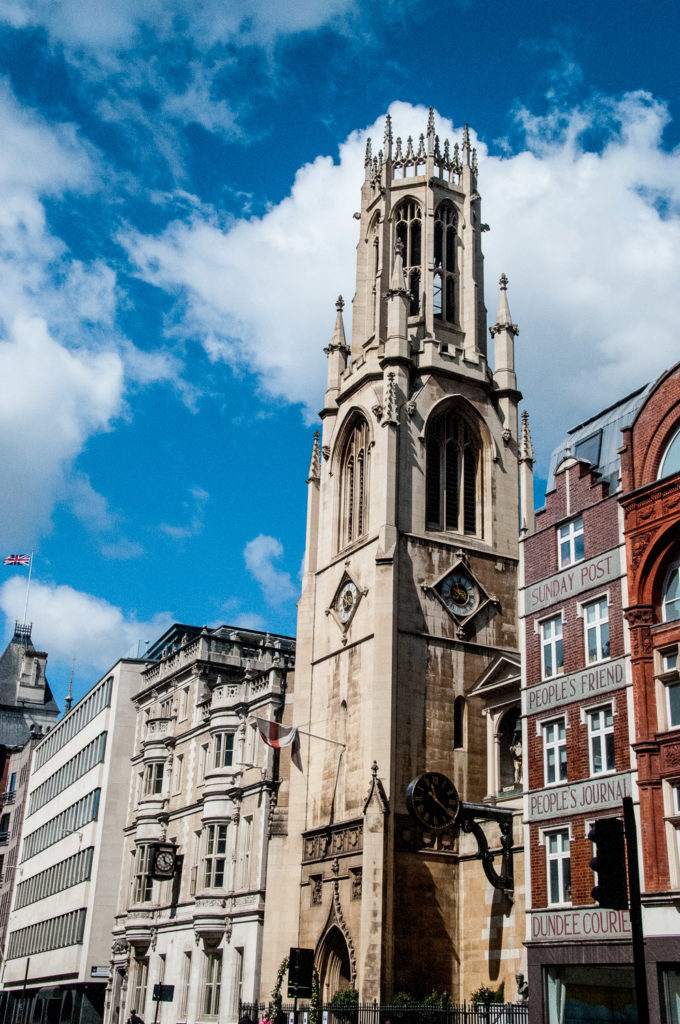
I came across this fascinating picture whilst doing my research. It was published in 1975 in the book The City at War by Ian Grant and Nicholas Maddren. Looking west along Fleet Street towards the Strand, it was taken in 1944 and shows the smoke arising in the distance from a recent hit by a V2 rocket …
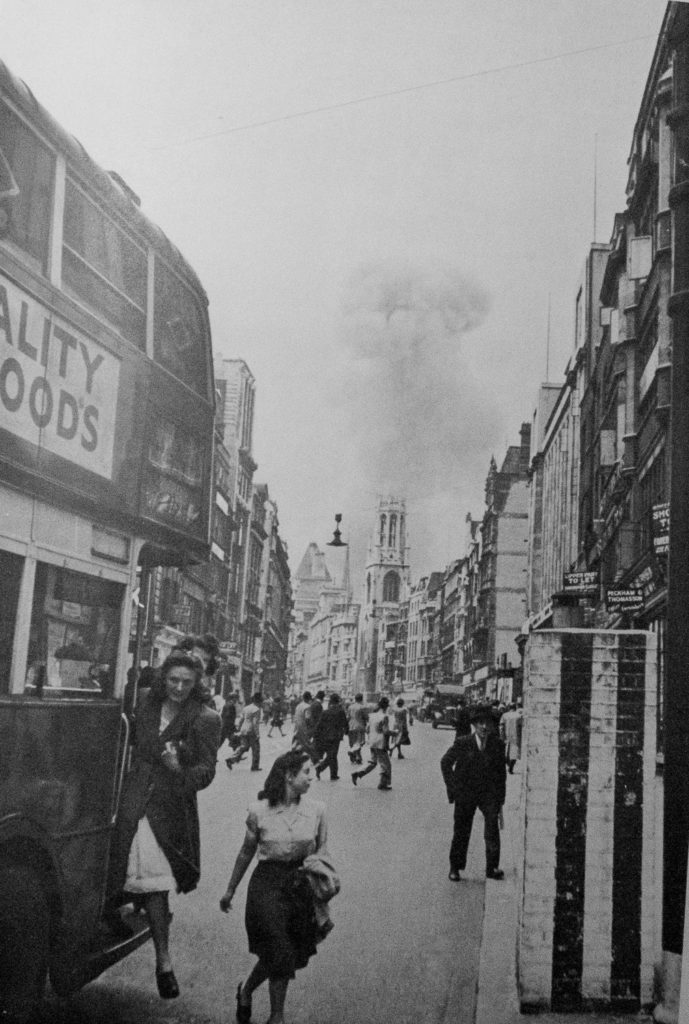
And finally, I am publishing again this painting by Harold Workman now on display at the Guildhall Art Gallery and entitled Chaos on London Bridge. It was probably painted some time in the 1930s or 1940s …
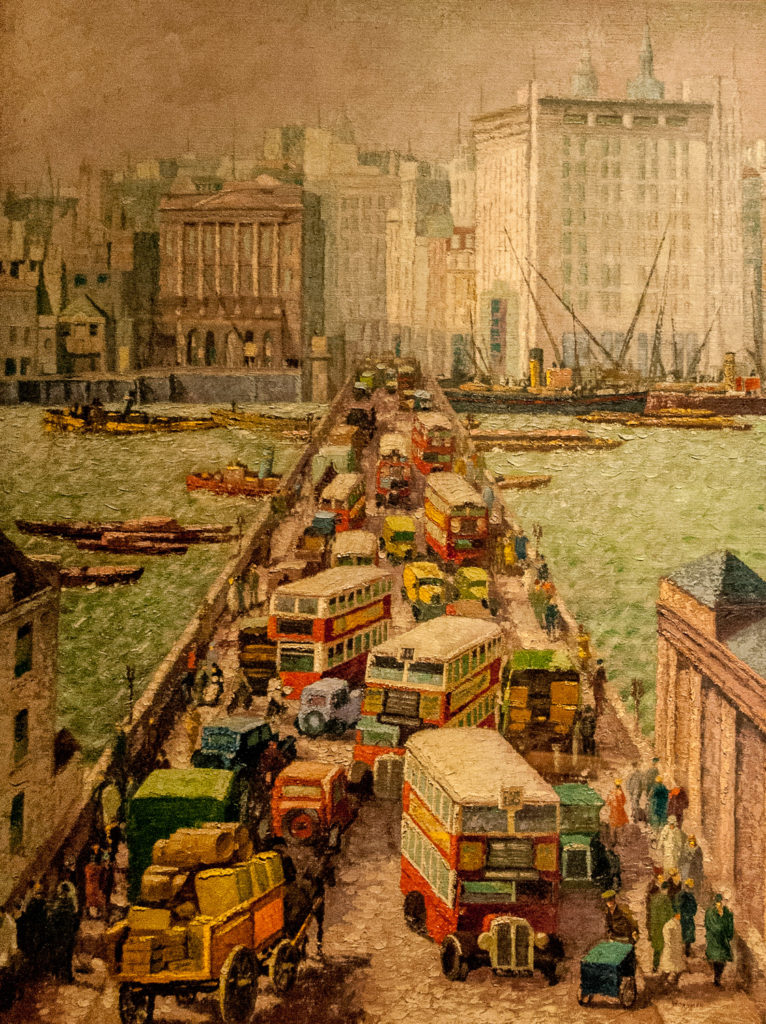
And here is a picture I found of London Bridge circa 1870 …
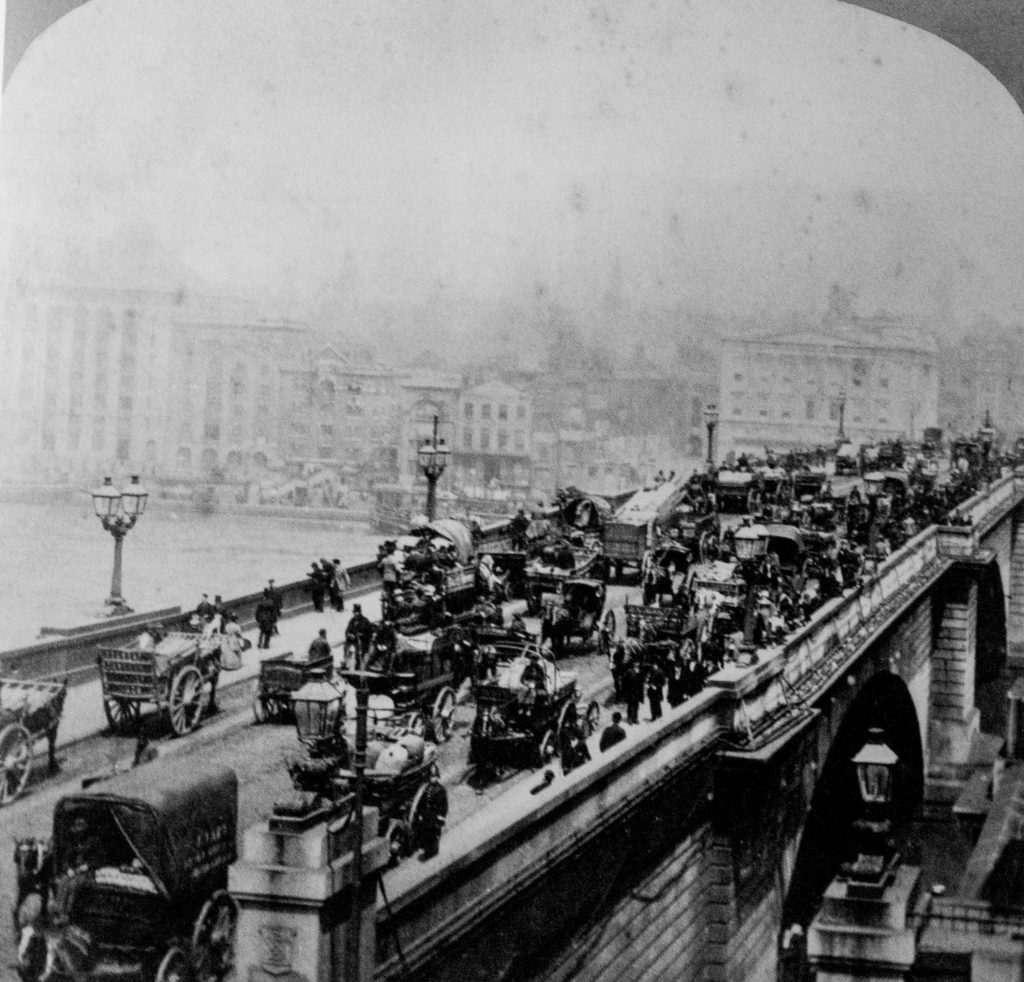
I think London Bridge and its history might be worth a blog on its own and I shall explore this idea.
You can find more great ‘Then and Now’ pictures (including some of the above) here on the Spitalfields Life blog.
